Street photography is all about storytelling. And a great way to tell interesting stories through your iPhone photos is to create a sense of mystery and drama. One of the best techniques for creating dramatic and intriguing photos is to shoot in strong sunlight so that you can capture silhouettes, shadows, reflections and lens flare. In this tutorial you’ll discover how to make the most of harsh sunlight to capture incredible iPhone street photos that will grab and hold your viewer’s attention.
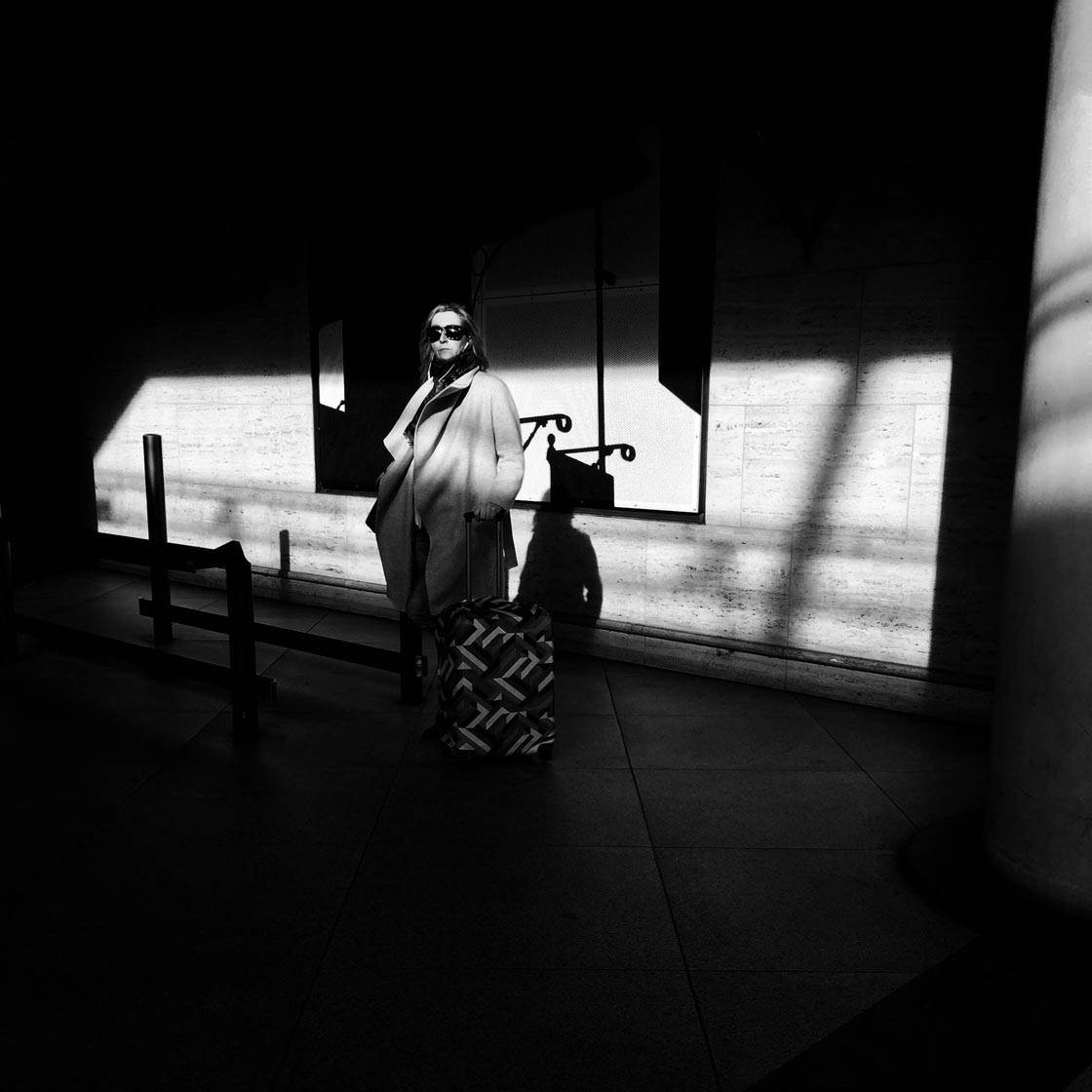
1. Shoot In Bright Sunlight
We’re often taught not to shoot in bright sunlight because it can cause problems with exposure and unwanted shadows. But some of the most dramatic and impressive images can be created in these conditions.
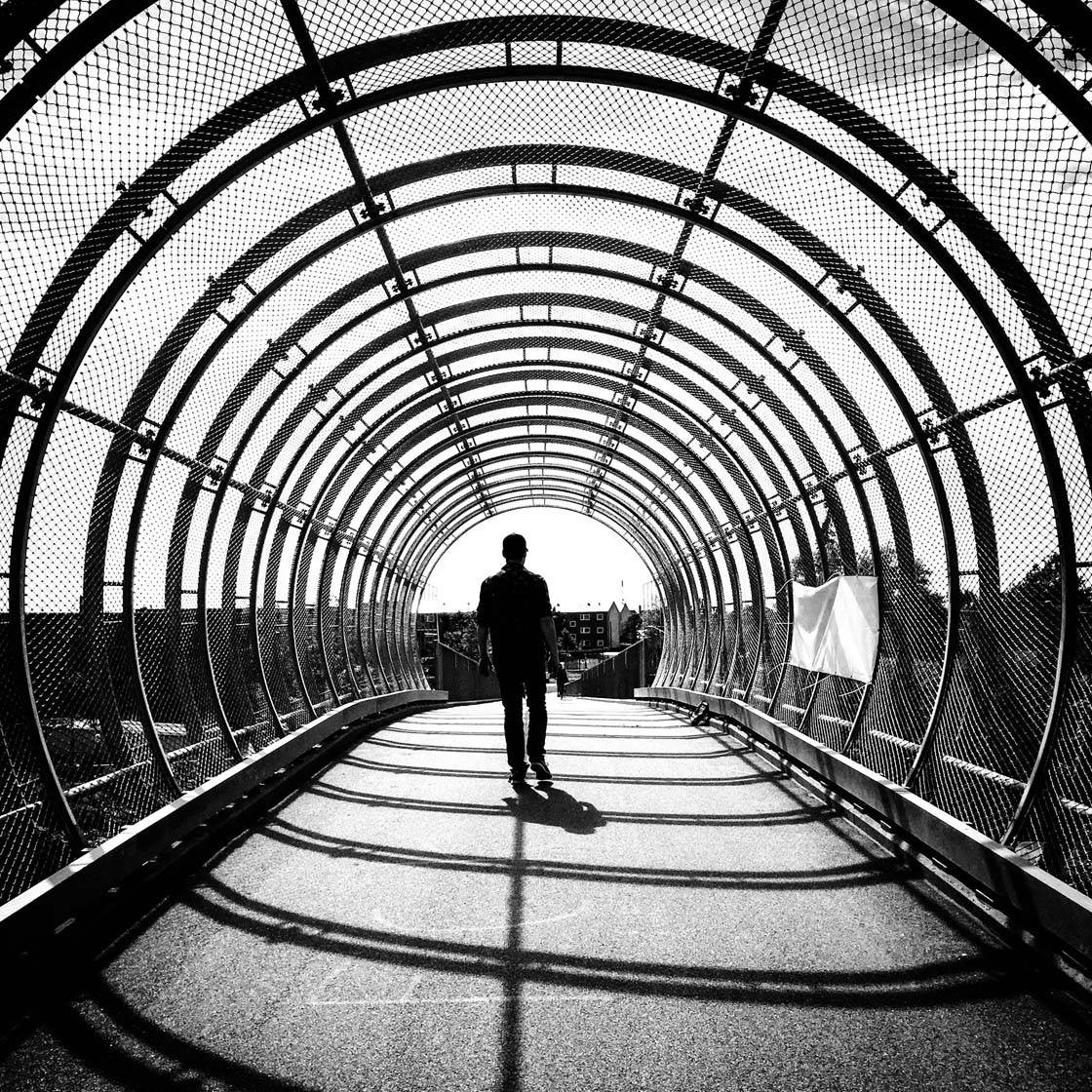
Dark silhouettes, beautiful shadow patterns and interesting reflections can all be easily created when you have a strong light source. These elements are perfect for creating dramatic and mysterious street photos with your iPhone.
Harsh sunlight in the middle of day is great for creating strong shadows. Look all around you to see where these shadows appear – on the ground, on walls, outdoors and indoors.
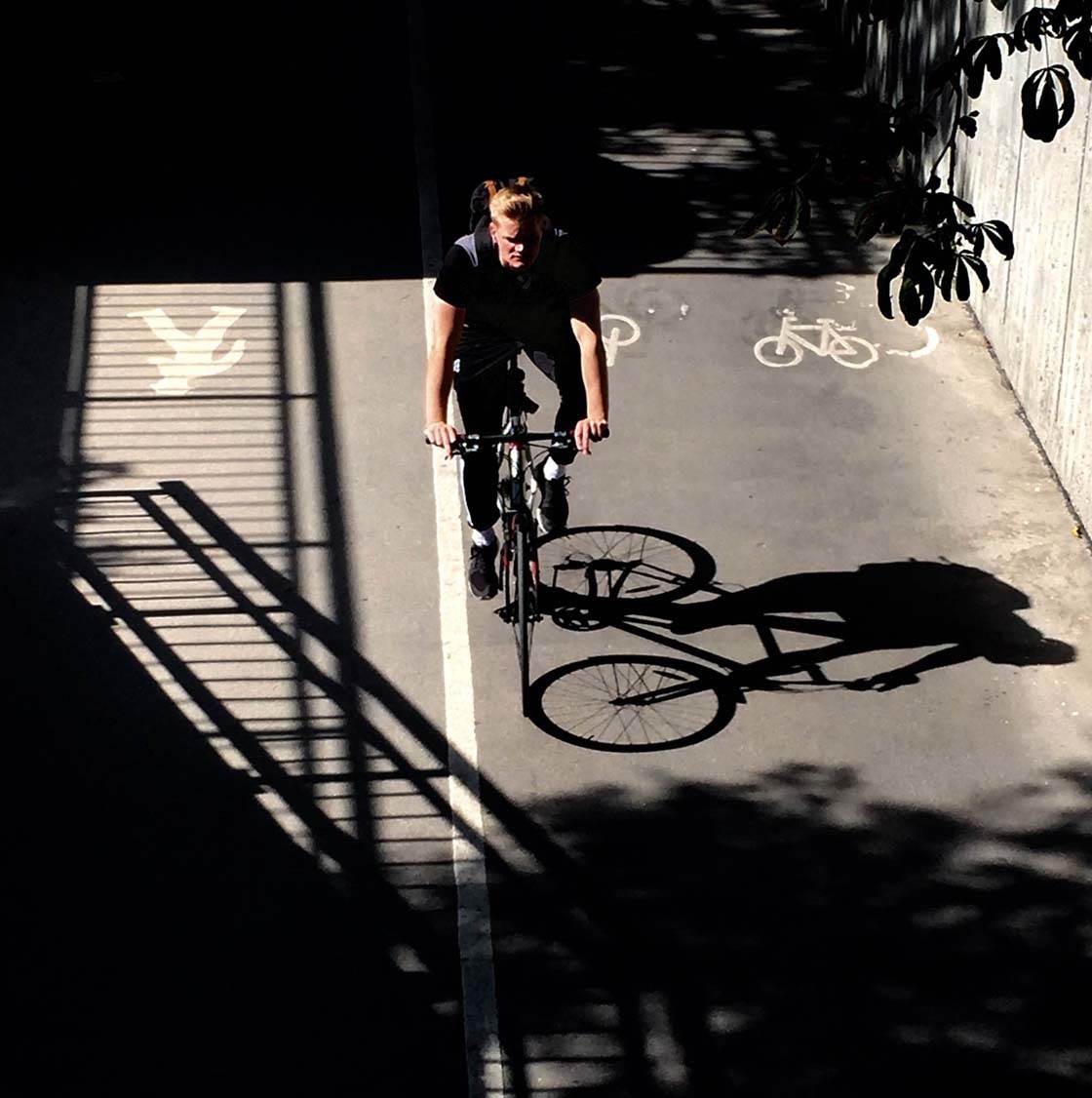
You can also make use of the beautiful light of golden hour which occurs around sunrise and sunset.
At this time of day you can capture long shadows, beautiful golden light behind your silhouettes, and stunning lens flares that add a magical feel to your photos.
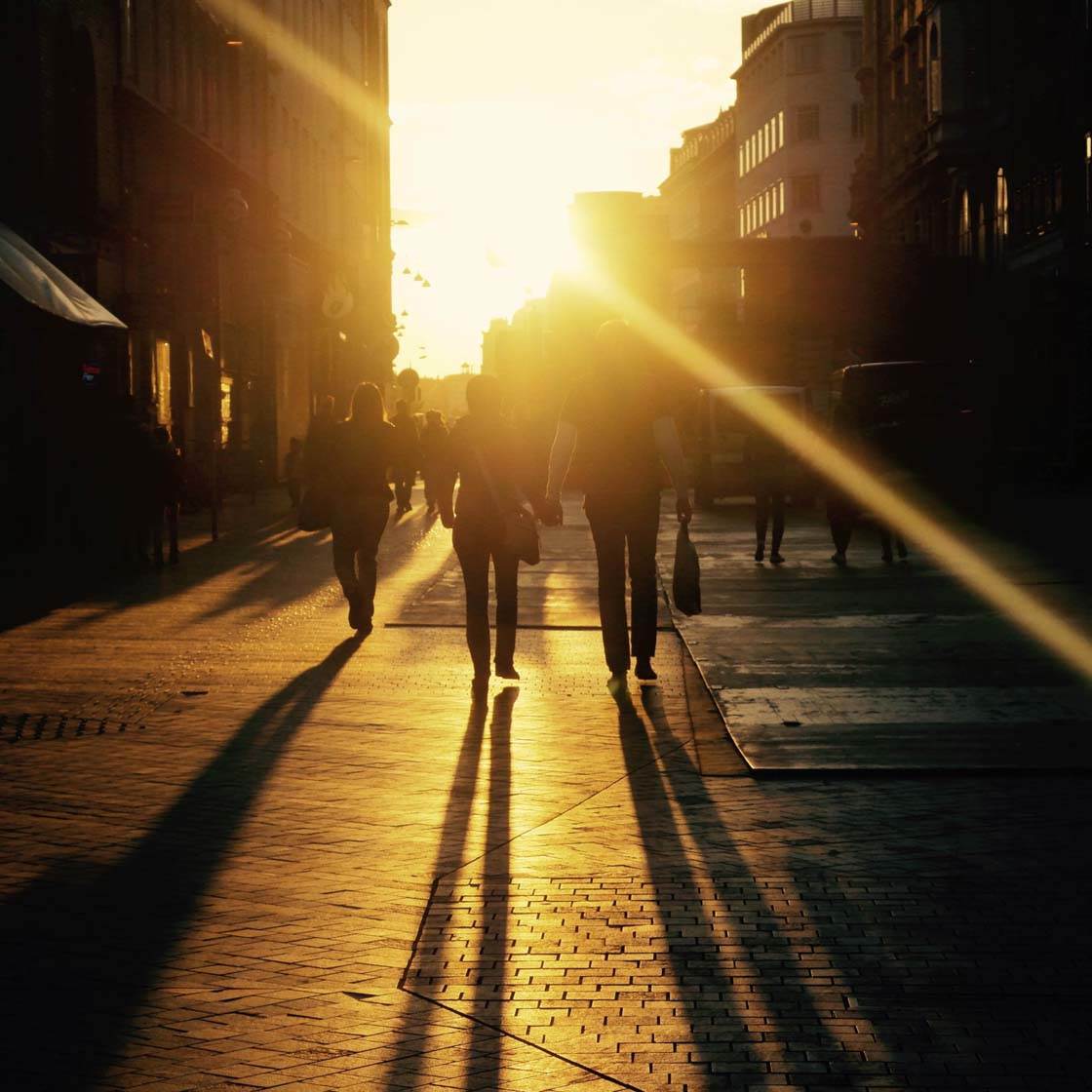
2. Find A Location With Interesting Light & Shade
When shooting in harsh light, look out for places that allow you to capture the contrast between light and darkness. Contrast catches the viewer’s attention and creates visual interest in your images.
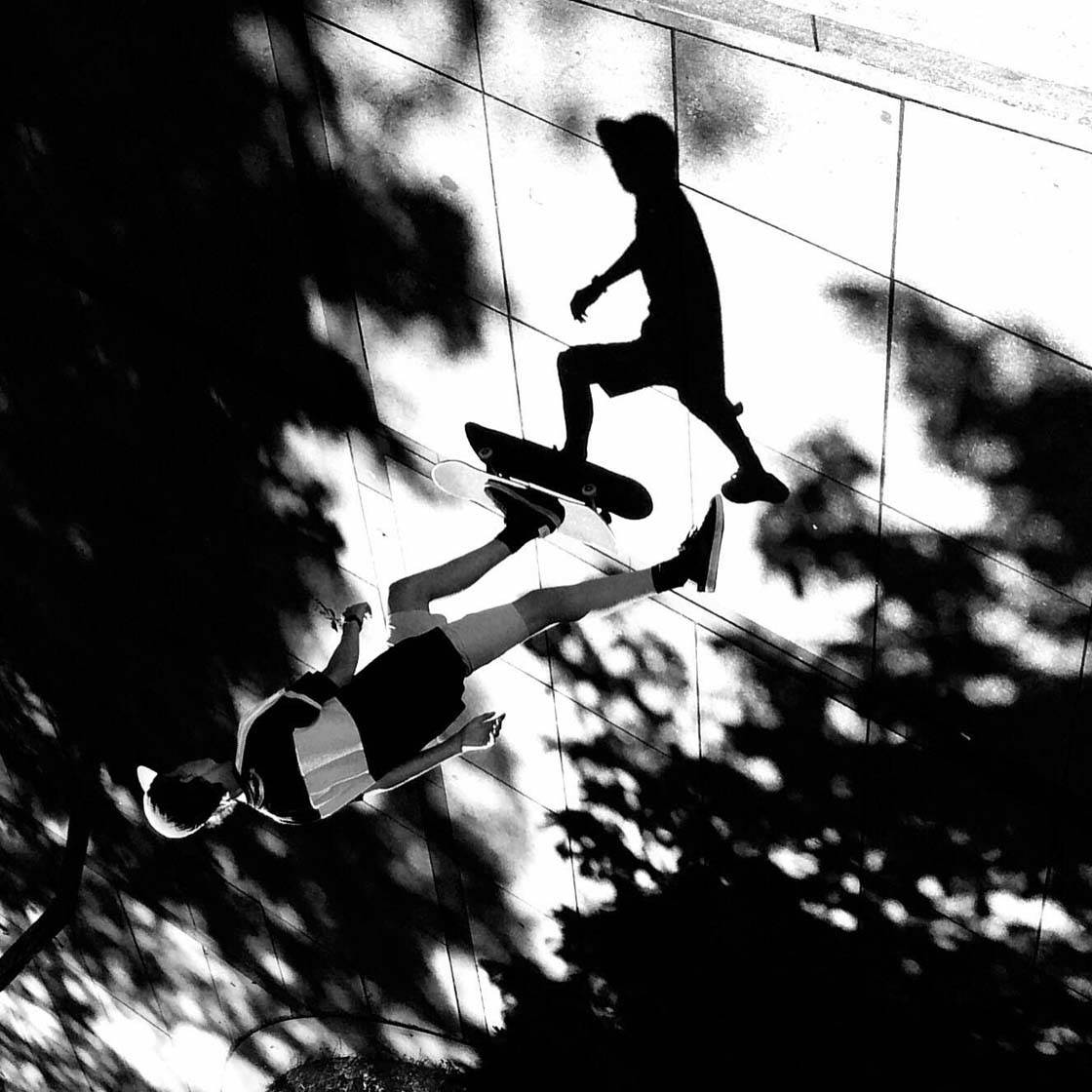
If you’re shooting out on a bright street, look for interesting shadow patterns on the ground created by nearby buildings or trees. Compose your shot so that you capture both the dark and bright areas within the scene.
If you can find some kind of cover, such as a tunnel or underpass, try standing in the shadows and shooting towards the light. Use the shapes and angles of the shadows to help you compose your shot.
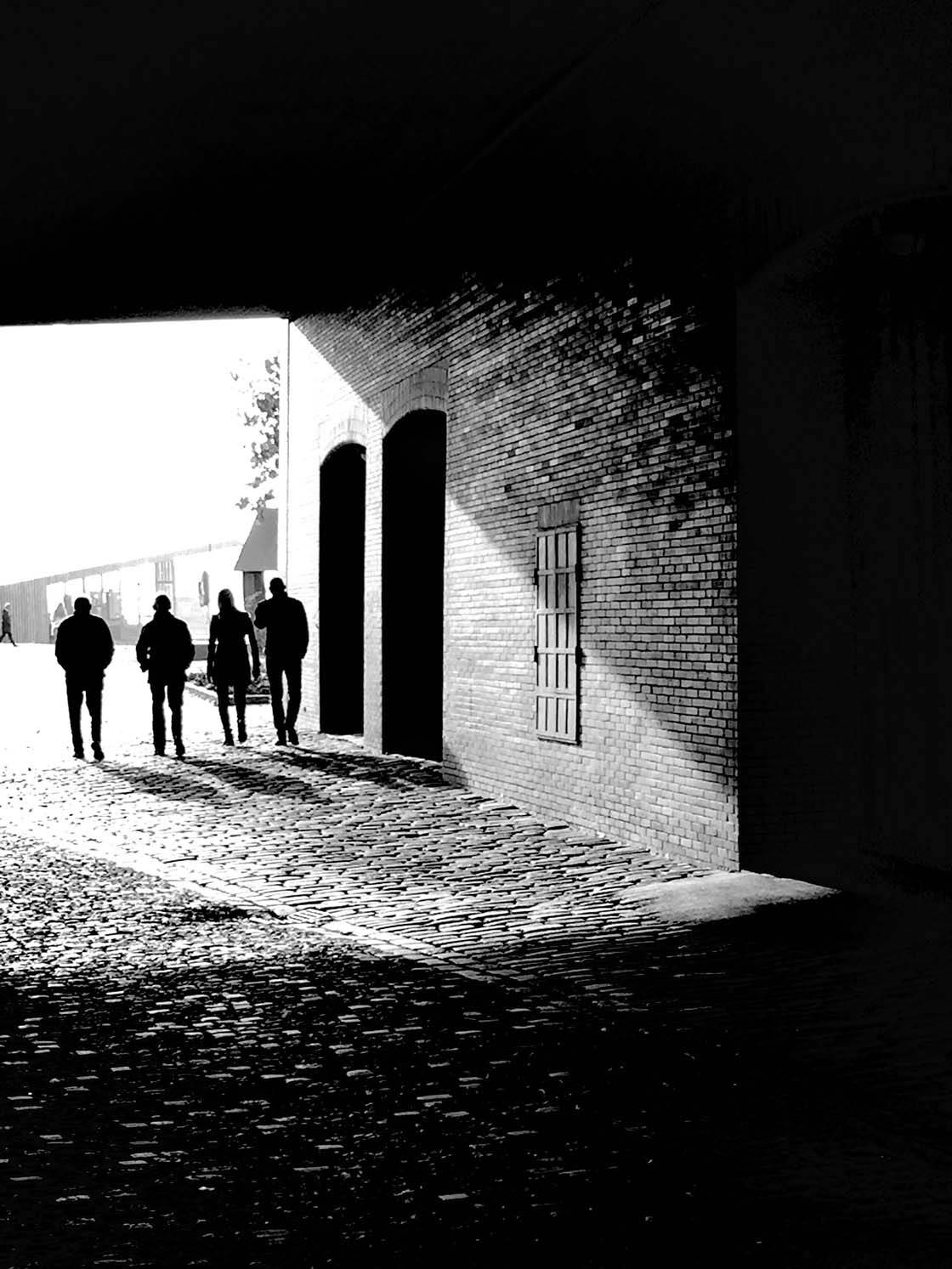
If you’re shooting indoors, look for windows or other openings where the light streams in. Notice where the light falls, and where the shadows appear within the scene.
Good indoor locations include railways station buildings and stairwells, but anywhere that you have window light will work.
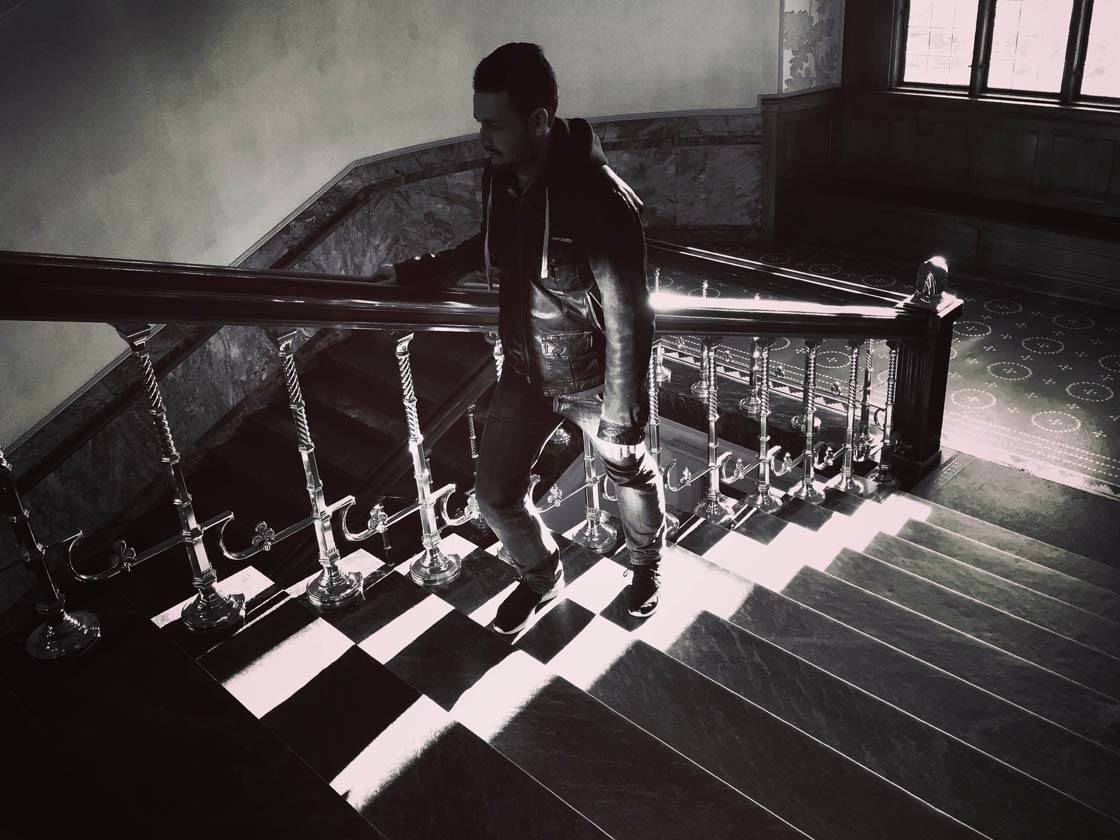
When you’ve found a good location, compose your shot, then wait for a person to walk into the illuminated area and take a few shots as they move through the scene.
3. Adjust Exposure
Harsh light often creates high contrast scenes, where parts of the image are very dark and other parts are very bright.
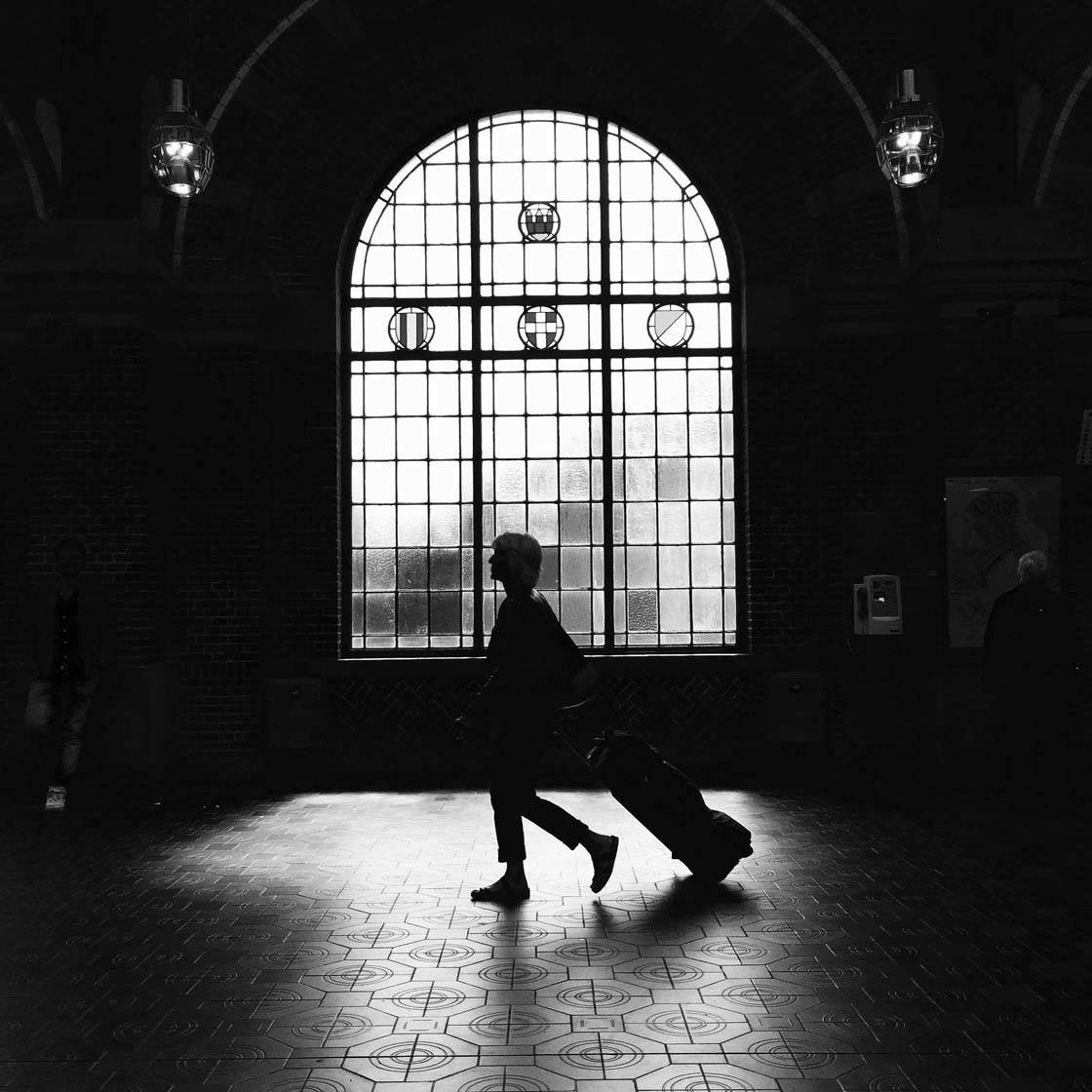
While this is great for creating drama and visual interest in your photos, if the majority of the scene is dark it can trick the camera into over-exposing the photo.
This means that everything will appear brighter than it should be. The highlights (brighter areas) will appear blown out (completely white) with no color or detail visible, and the shadows won’t appear dark enough.
To prevent your image from being over-exposed, you should always adjust the exposure manually before you take the shot.
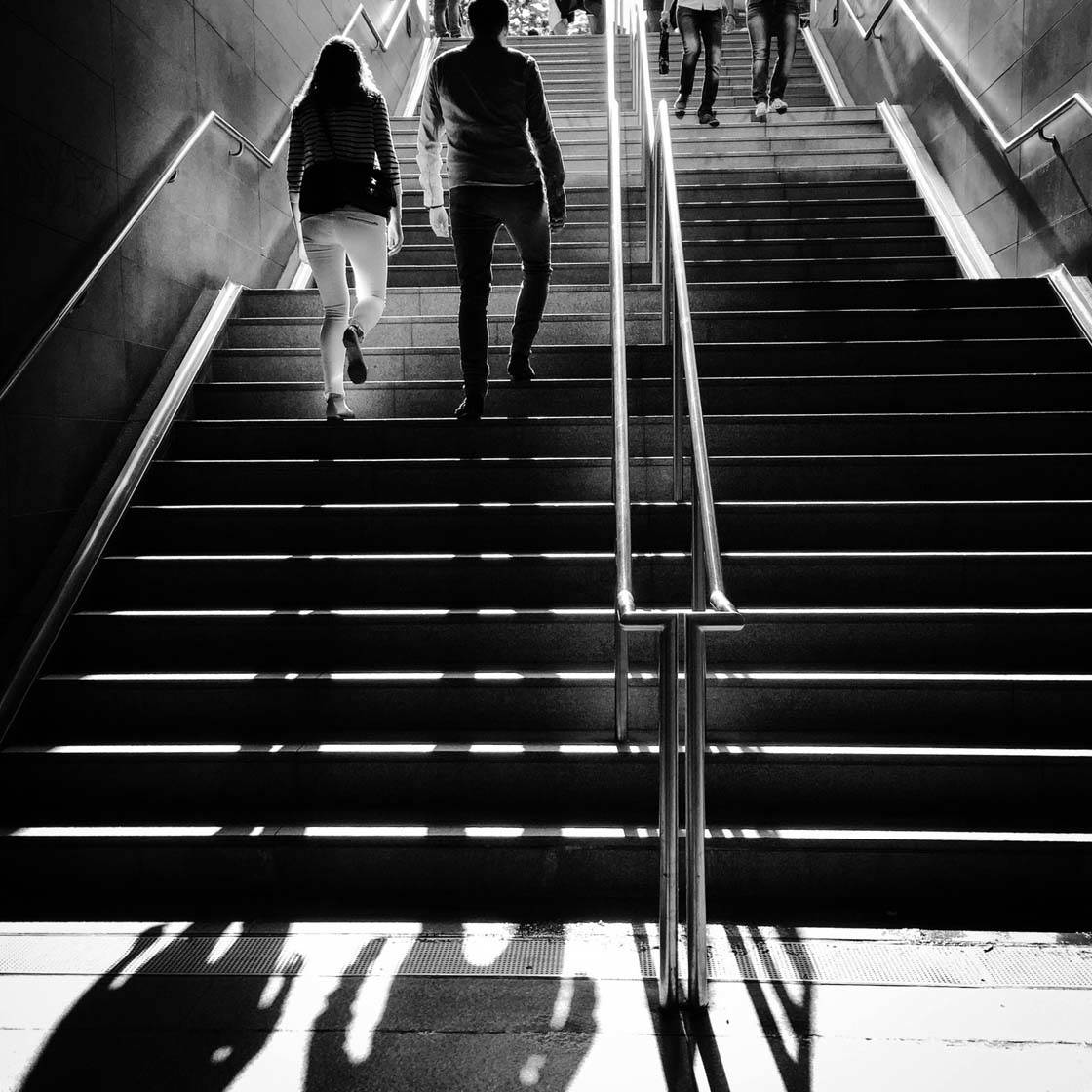
To adjust exposure, start by tapping to set focus on the area that you want to appear sharp, then swipe your finger up or down on the screen to access the exposure slider.
Swipe up to make the image brighter or down to make the image darker. In most cases you’ll need to make the image a bit darker.
The aim is to ensure the highlights (bright areas of the image) are correctly exposed with color and detail visible, while the shadows appear dark or even black.
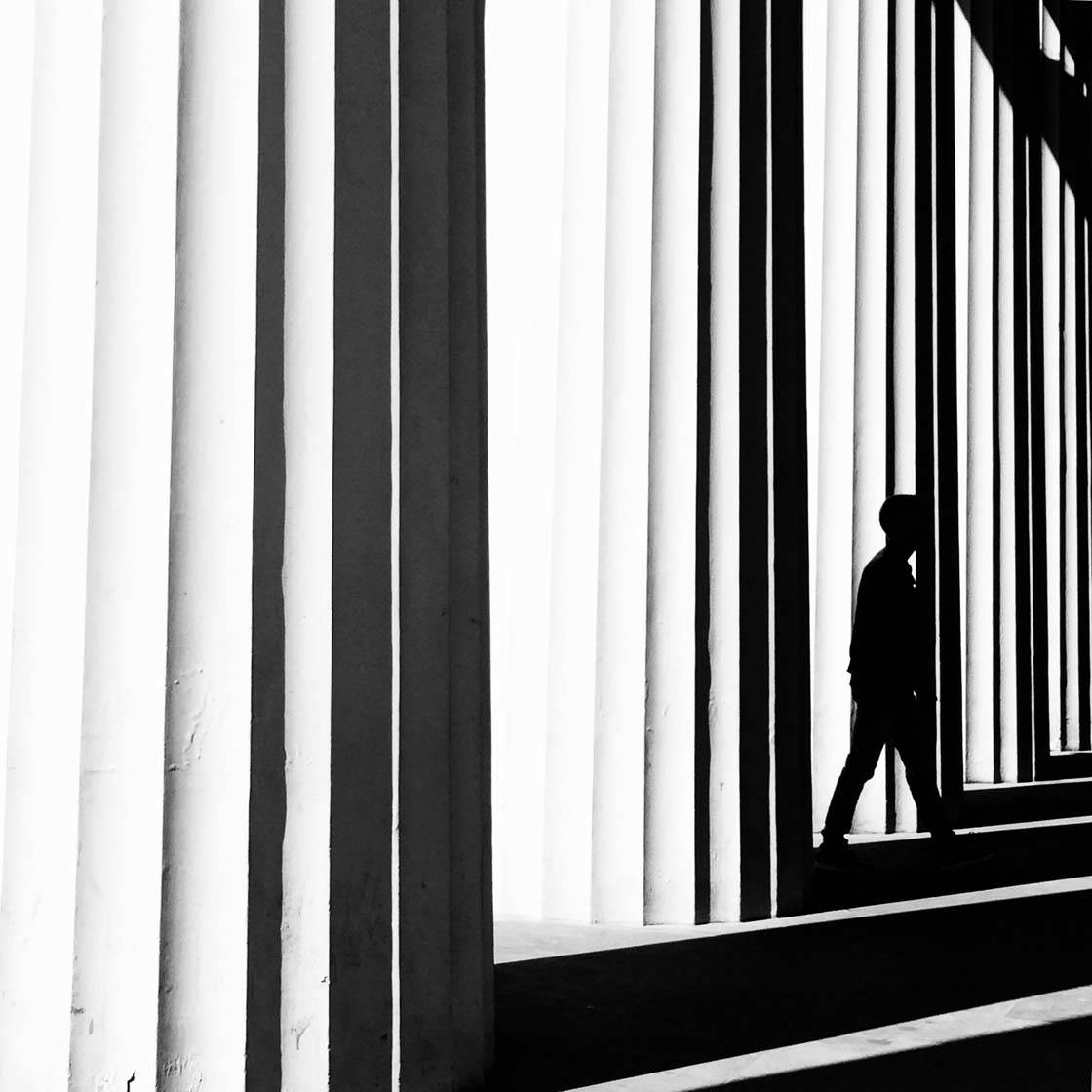
In very high contrast situations, some of the brightest areas of your image may end up pure white. In some cases this will look fine, especially if it’s an area of sky. But in general, you should attempt to preserve color and detail in the highlights.
When the exposure is properly adjusted, the dark shadows will create a wonderfully dramatic look.
4. Create Silhouettes
Silhouettes are a great way to add a powerful element to your street photography. When your subject is backlit by the strong sunlight, it’s easy to capture them as a dark outline against the bright background.
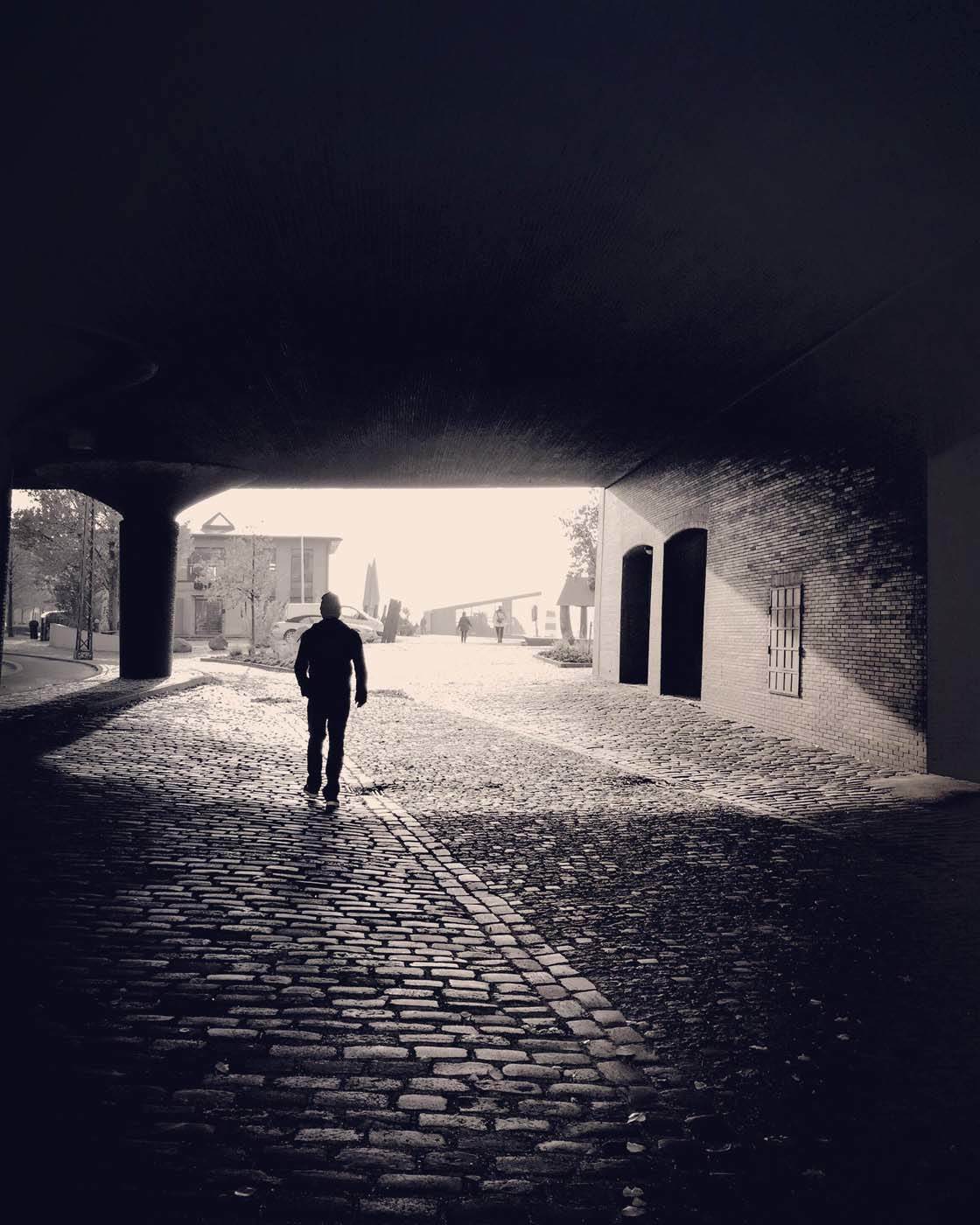
A silhouette adds a strong focal point to your composition, drawing the viewer’s eye directly toward the subject. And because you can’t see any detail in the dark silhouette, it adds a wonderful sense of mystery and intrigue to the image.
To create a silhouette photo with your iPhone, you need to shoot with the sun or bright light behind the your subject. Shooting from a low angle can help you get more bright sky and less dark background behind your subject.
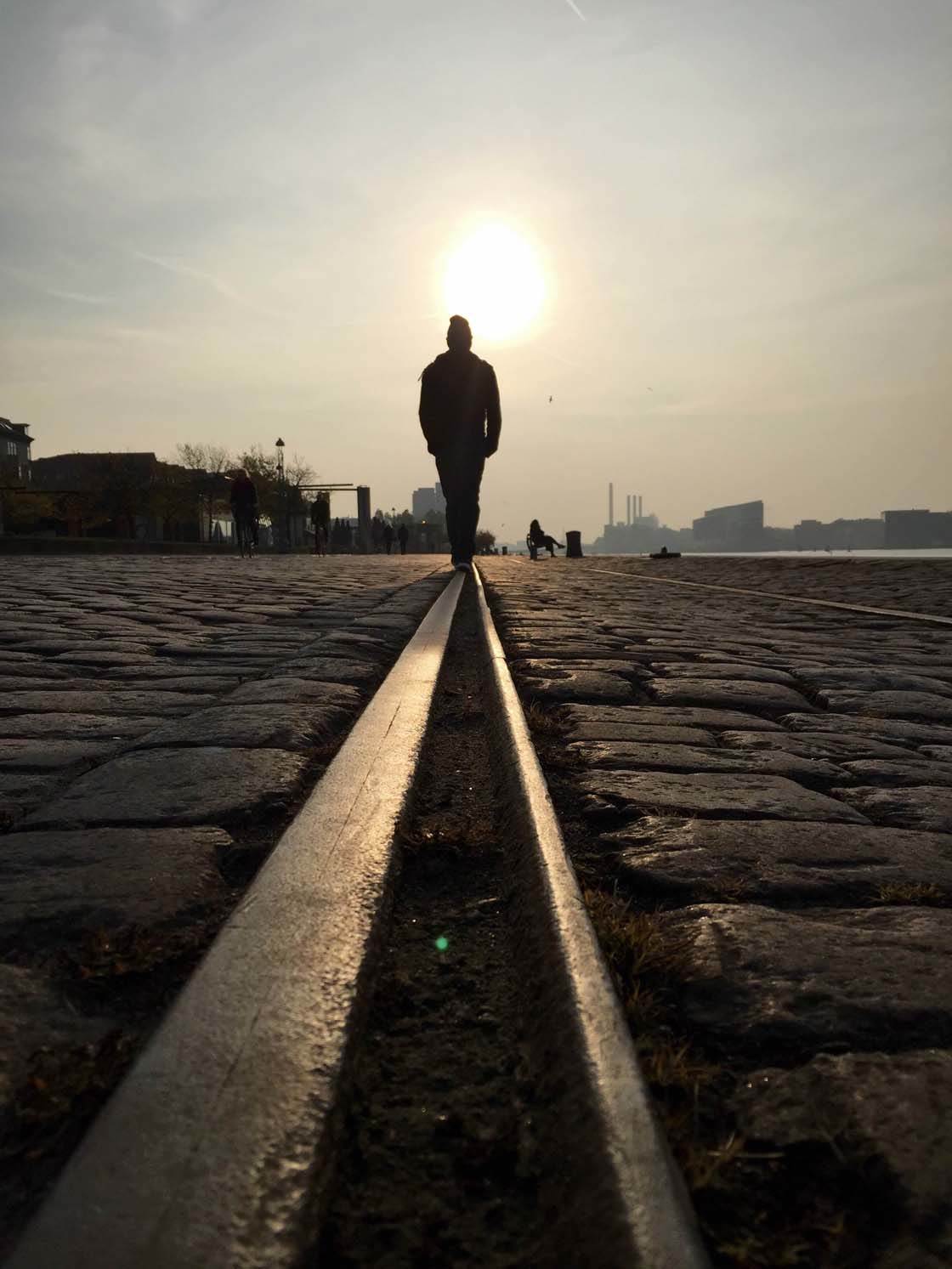
The key to capturing a great silhouette is getting the exposure right. So always tap on the screen to set your focus point, then swipe down to reduce the exposure.
You need to reduce the image brightness until the subject appears as a dark shape against the brighter background.
Silhouettes can also be created indoors, as long as you have a strong light source such as a window or other opening.
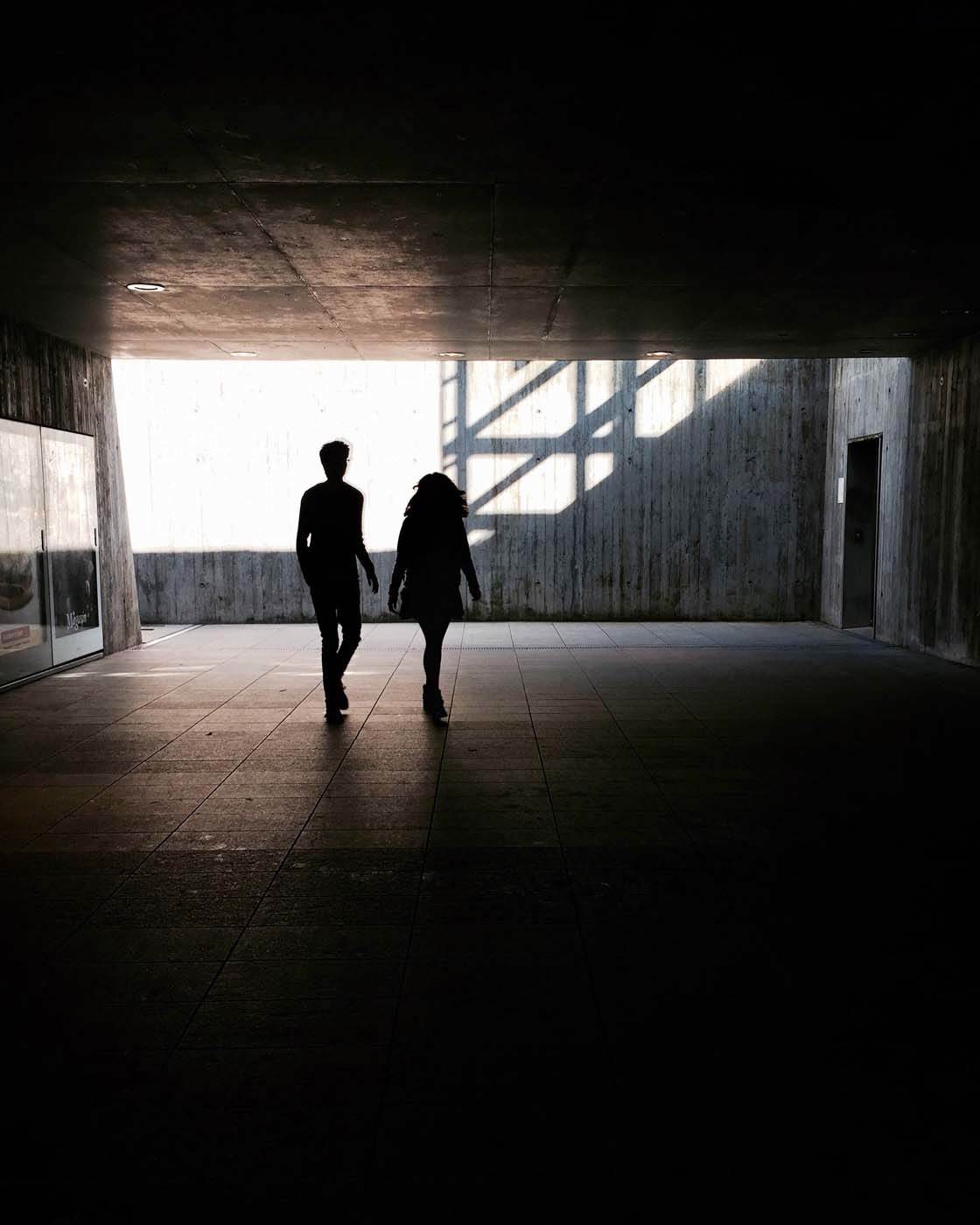
The underground of this railway station was a perfect spot for capturing silhouettes. I simply positioned myself in the shadows so that I was facing toward the light, then waited for this couple to walk into the scene.
Places like this naturally have a lot of people passing by, so you’ll have plenty of opportunities to capture silhouettes walking into the illuminated areas of light.
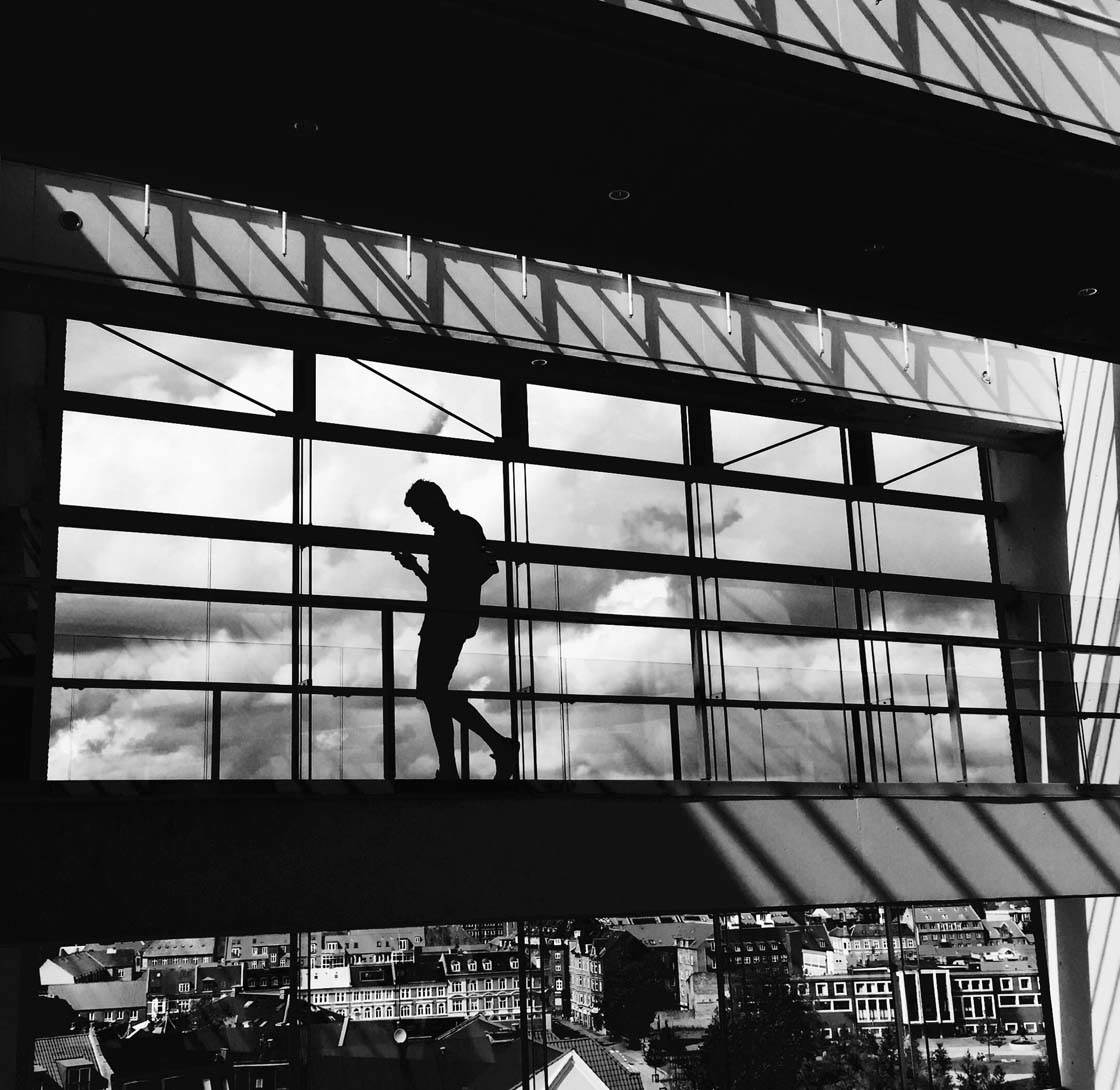
If you’re shooting inside a building with large windows, simply point your iPhone towards the window. This bright background will allow you to easily capture a silhouette of a person walking by.
As well as being excellent light sources, windows can act as a frame around your silhouette. They can also cast wonderful shadow patterns on the surrounding architecture.
Sometimes you have to be quick when you see a person standing just right in the sunlight. But you should still try to think about creating a good composition, and of course, you need to set the focus and exposure before you take the shot.
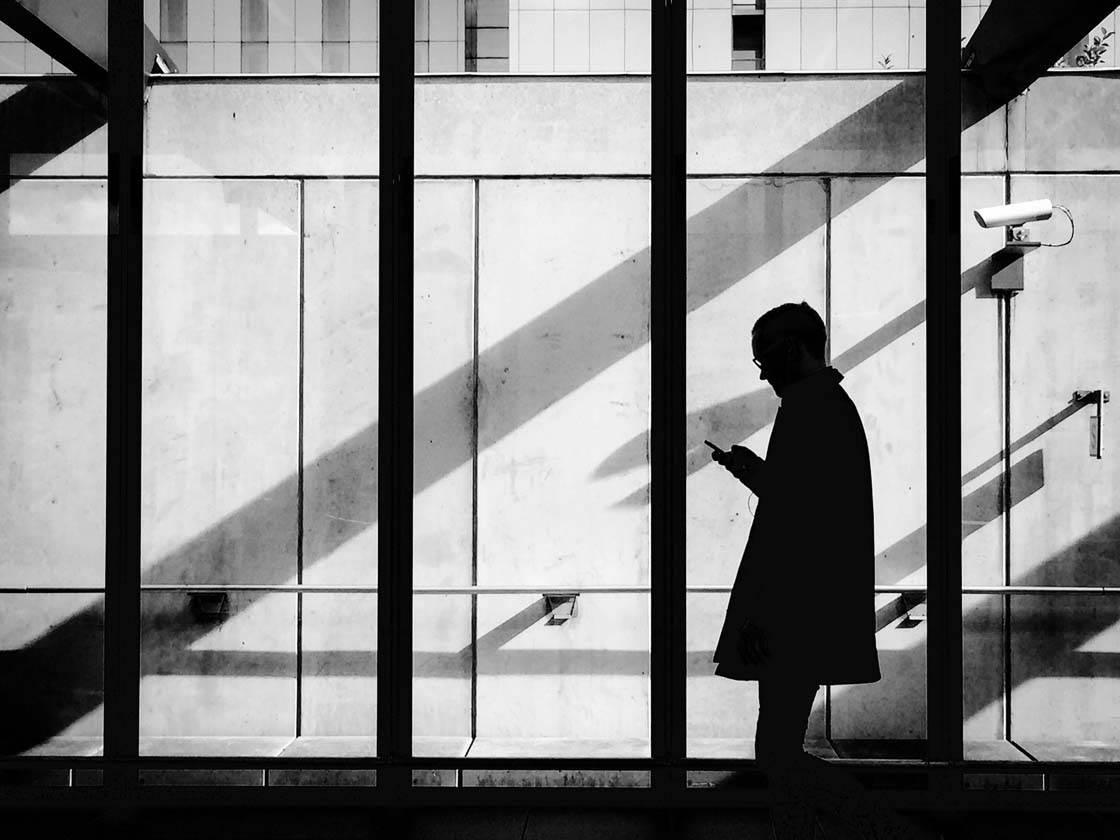
If you spot a good location with bright light and interesting framing objects or leading lines, you might want to compose your shot and reduce the exposure first.
Then wait for someone to walk into the scene before pressing the shutter button. That way, you’re ready to take the perfect shot as soon as your subject appears in the frame.
5. Capture Dramatic Shadows
Shadows are most noticeable in bright sunlight. On an overcast day the clouds act as a giant diffuser, softening the light and also the shadows. So when the sun is shining it’s the perfect time to practice your shadow photography.
Whenever the sun is shining, take a few moments to look around and see where the shadows appear. Notice how the shadows can be cast onto the ground and also onto walls.
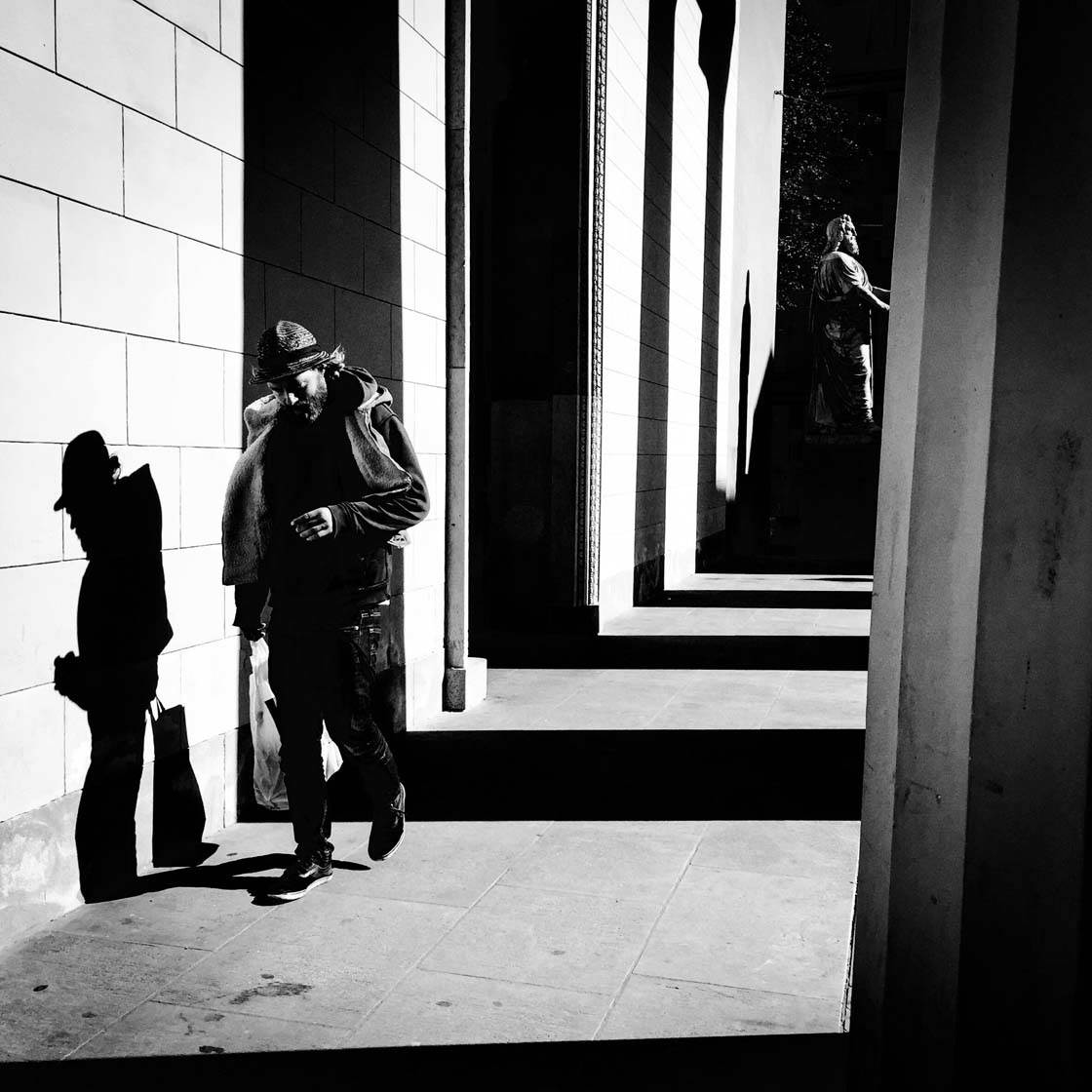
The strongest shadows will appear during harsh sunlight in the middle of day. But you can also take great shadow photos when the sun is low in the sky. The lower the angle of the sunlight, the longer the shadows will be.
Shadows will change quite dramatically throughout the day. Their position, shape, pattern, length and intensity will vary depending on the position and strength of the sun.
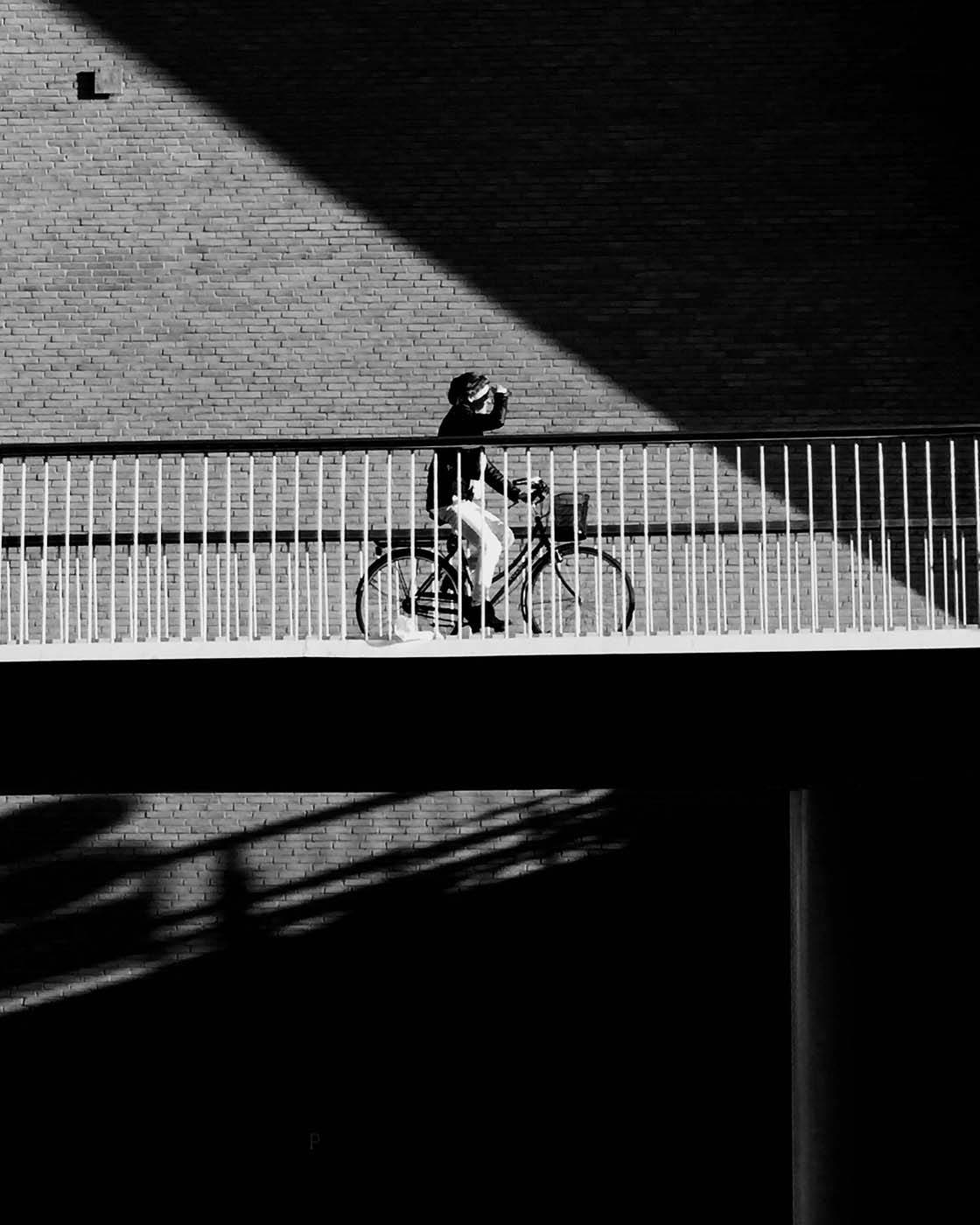
Look out for these variations in different places and at different times of the day. That way you can plan to come back at certain hours of day in order to capture a specific type of shadow pattern in your pictures.
There are so many ways to capture shadows in your iPhone photos. Architecture around your city will often provide you with wonderful patterns of shadows that will add an extra touch of drama and mystique to your picture.
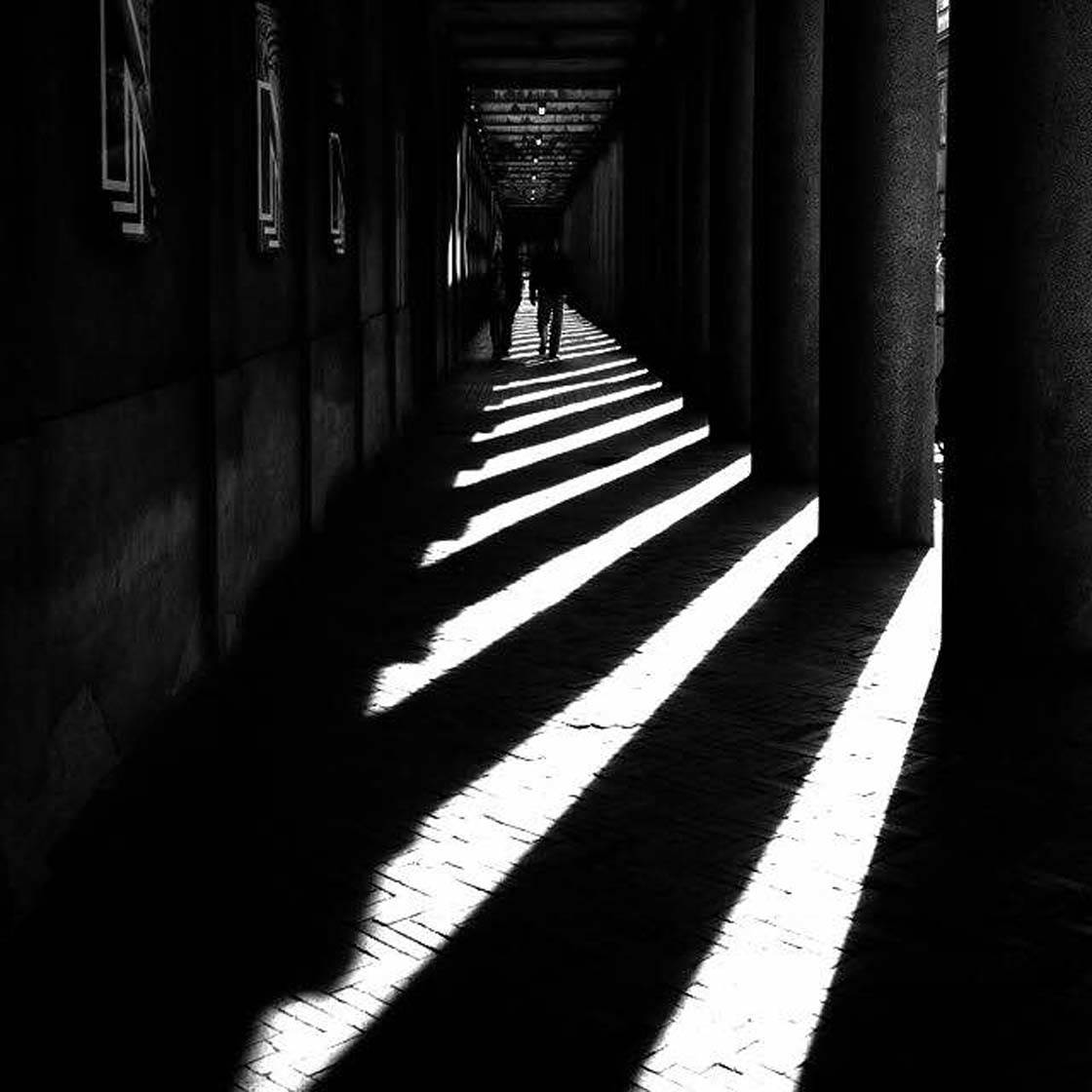
Look for buildings with repetitions in construction, such as columns or arches. They can cast the most amazing shadow patterns, and at the same time offer you the opportunity of perspective, depth and a vanishing point.
When shooting indoors, you’ll often find stunning shadow patterns cast by decorative window frames or skylights.
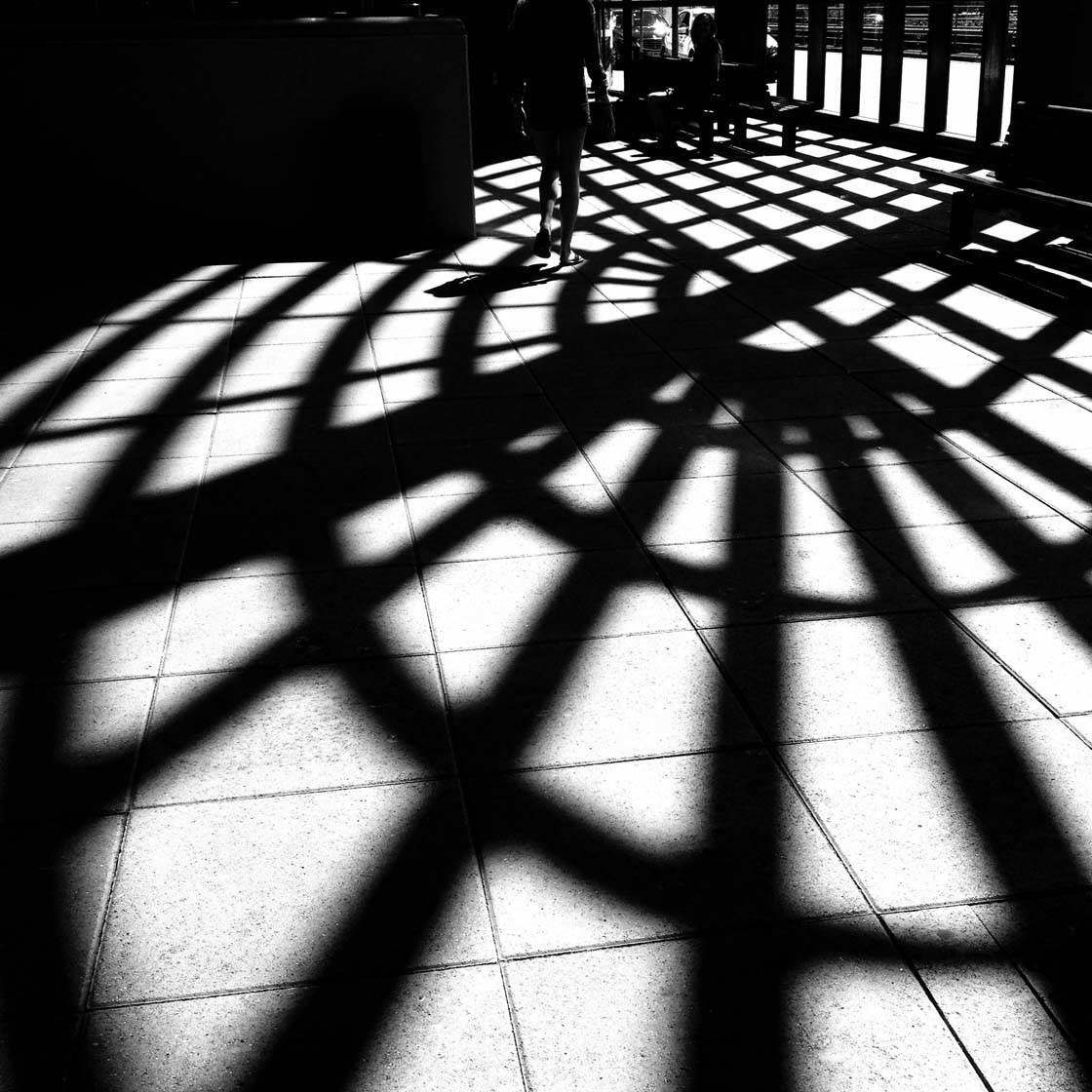
Remember to reduce the exposure if necessary. You want the shadows to appear dark and the highlights to have some detail visible.
Photographing shadows gives you the perfect opportunity to experiment with your creativity. You could fill the frame with just the shadow pattern to create an abstract image, or capture just the shadow of a person without the actual subject in the frame.
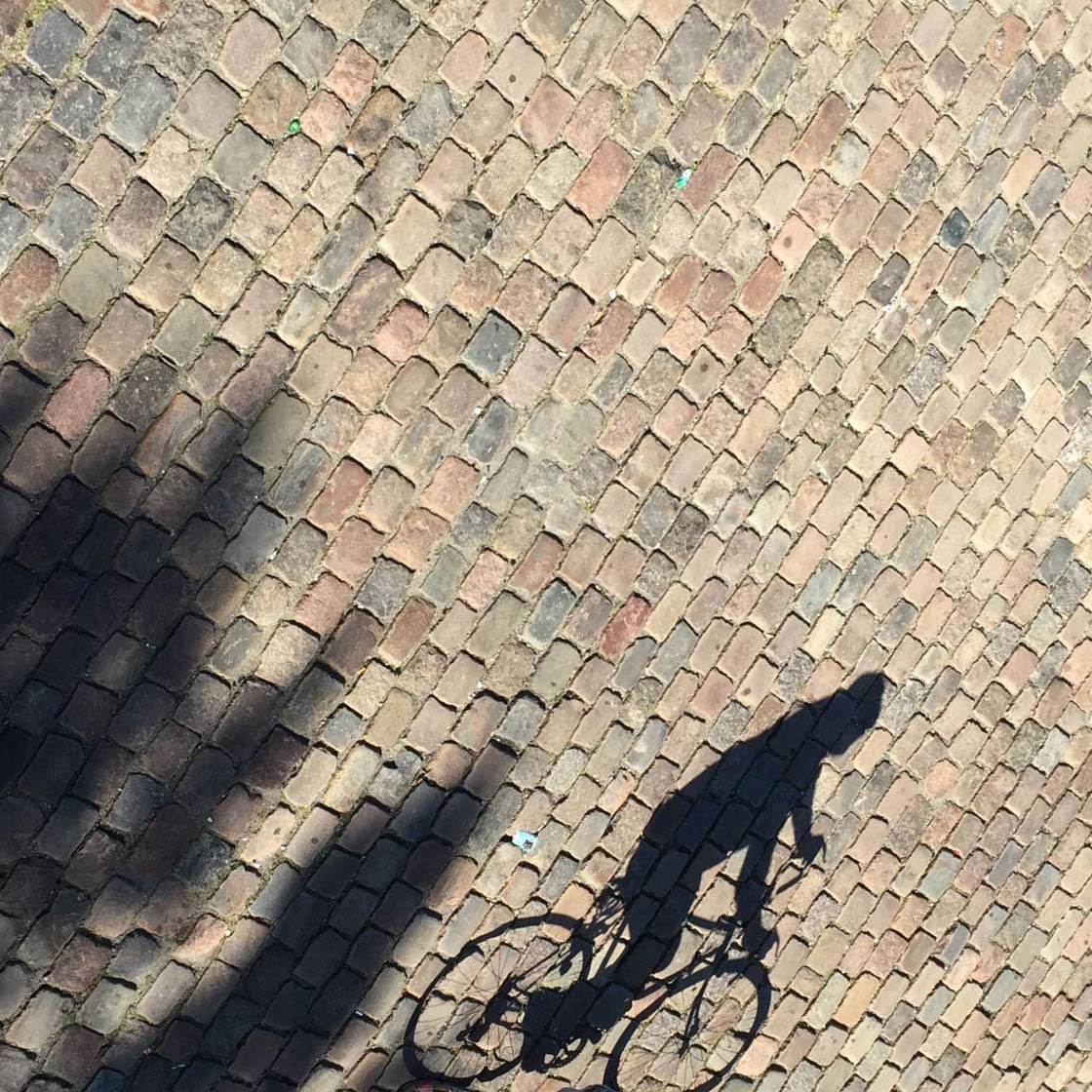
When I take a photo like this that contains just the shadow of my subject, I often like to flip it upside down in post-processing so that the shadow appears upright.
6. Look For Reflections
Another great way to add an extra eye-catching element to your street photos is to capture reflections.
Reflections are usually more visible on a sunny day than a cloudy one. Look for water reflections in puddles, as well as reflections on shiny walls, buildings or windows.
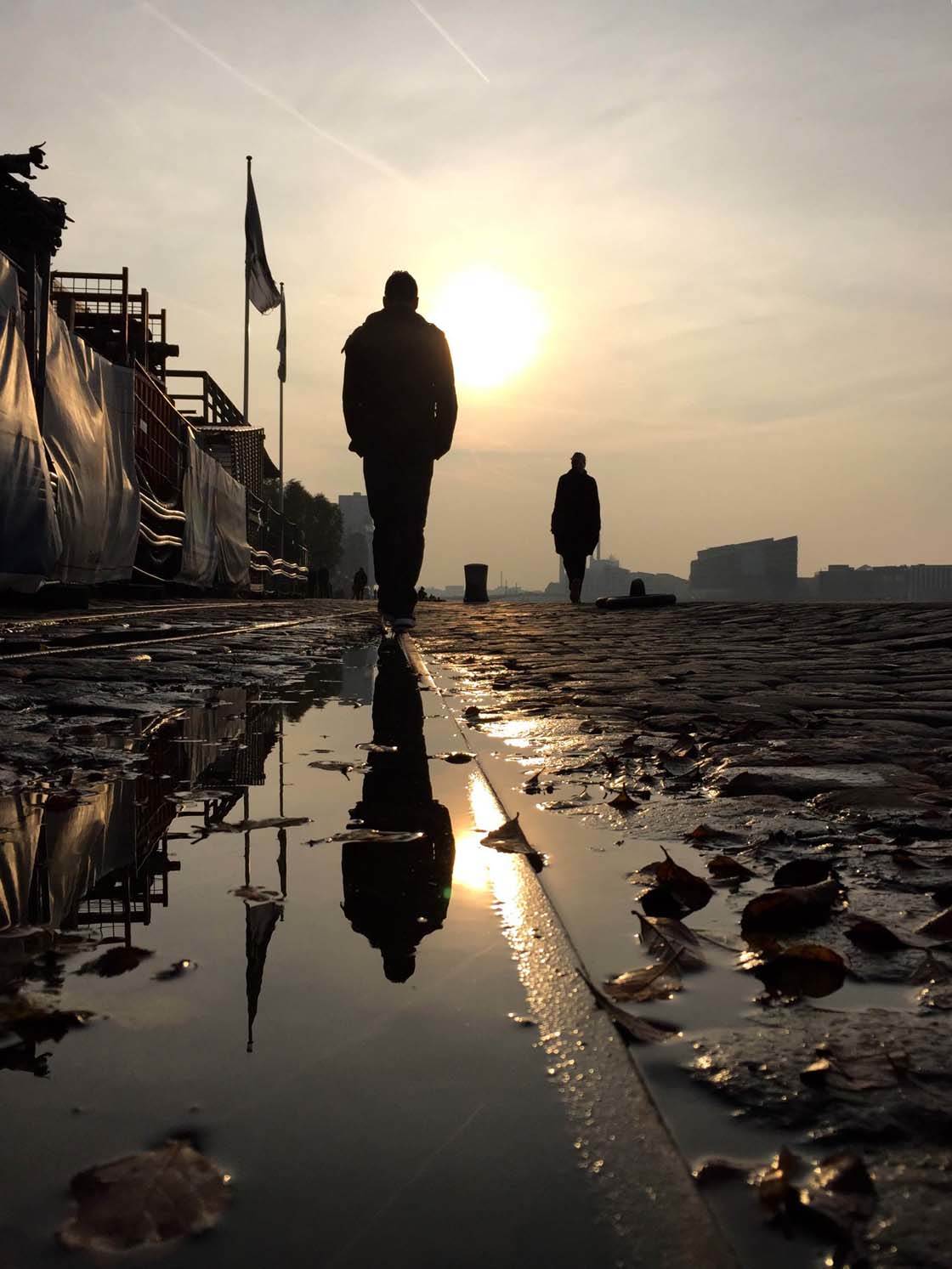
If you want to shoot a puddle reflection, look out for places where buildings, trees or other surrounding objects reflect in the water. Alternatively, find an empty place, then capture the silhouette and reflection of a person passing by.
When you shoot puddle reflections it’s important to shoot from a low angle, almost placing your phone in the water… without getting it wet!
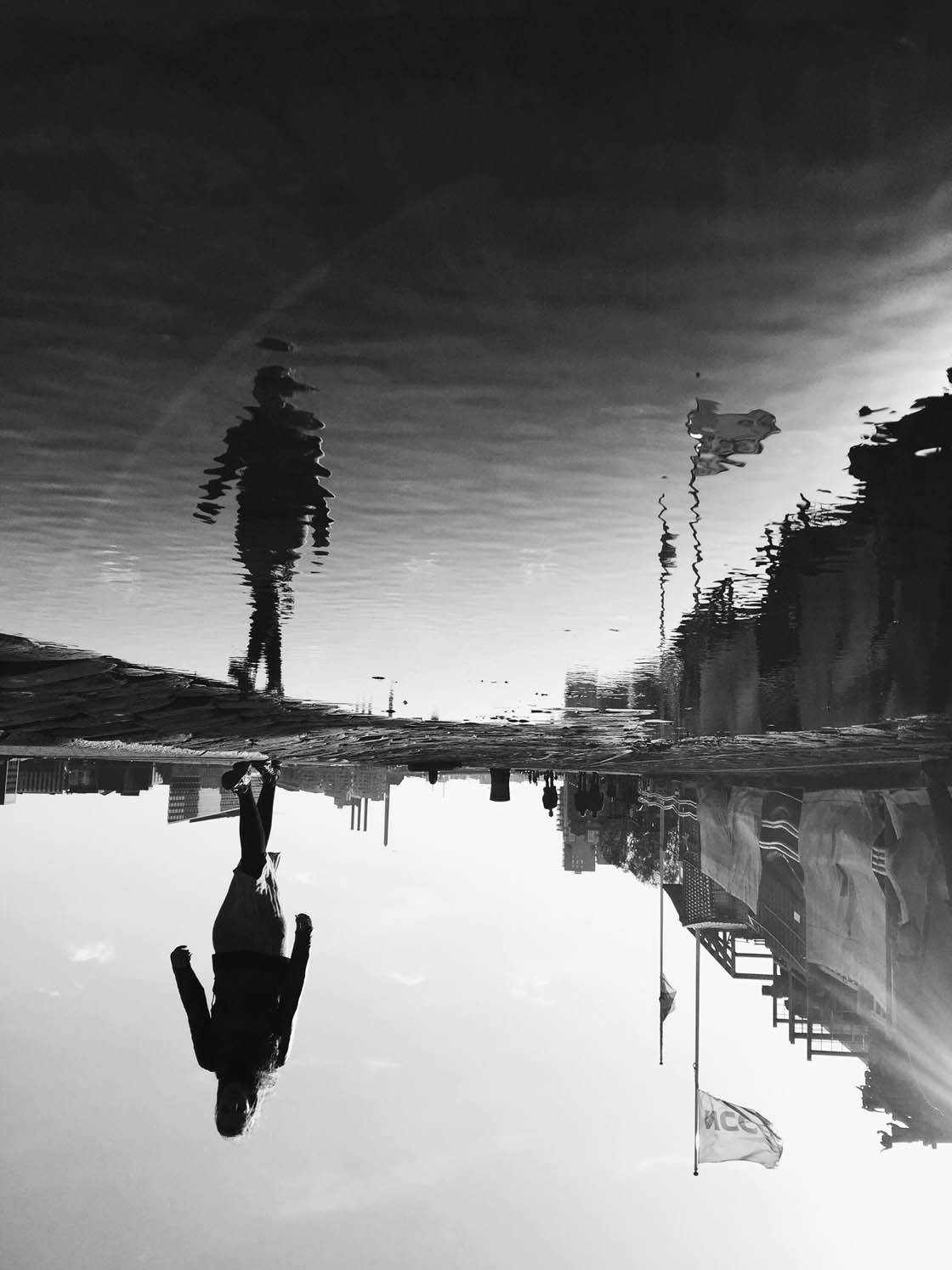
Shooting from a low vantage point allows you create a symmetrical composition where you capture both the reflection and the background.
After you’ve taken the shot, experiment with flipping your puddle reflection photos upside using an editing app. This often creates a more interesting final shot.
As well as looking for reflections in water, keep your eyes peeled for other reflective surfaces such as metal or glass.
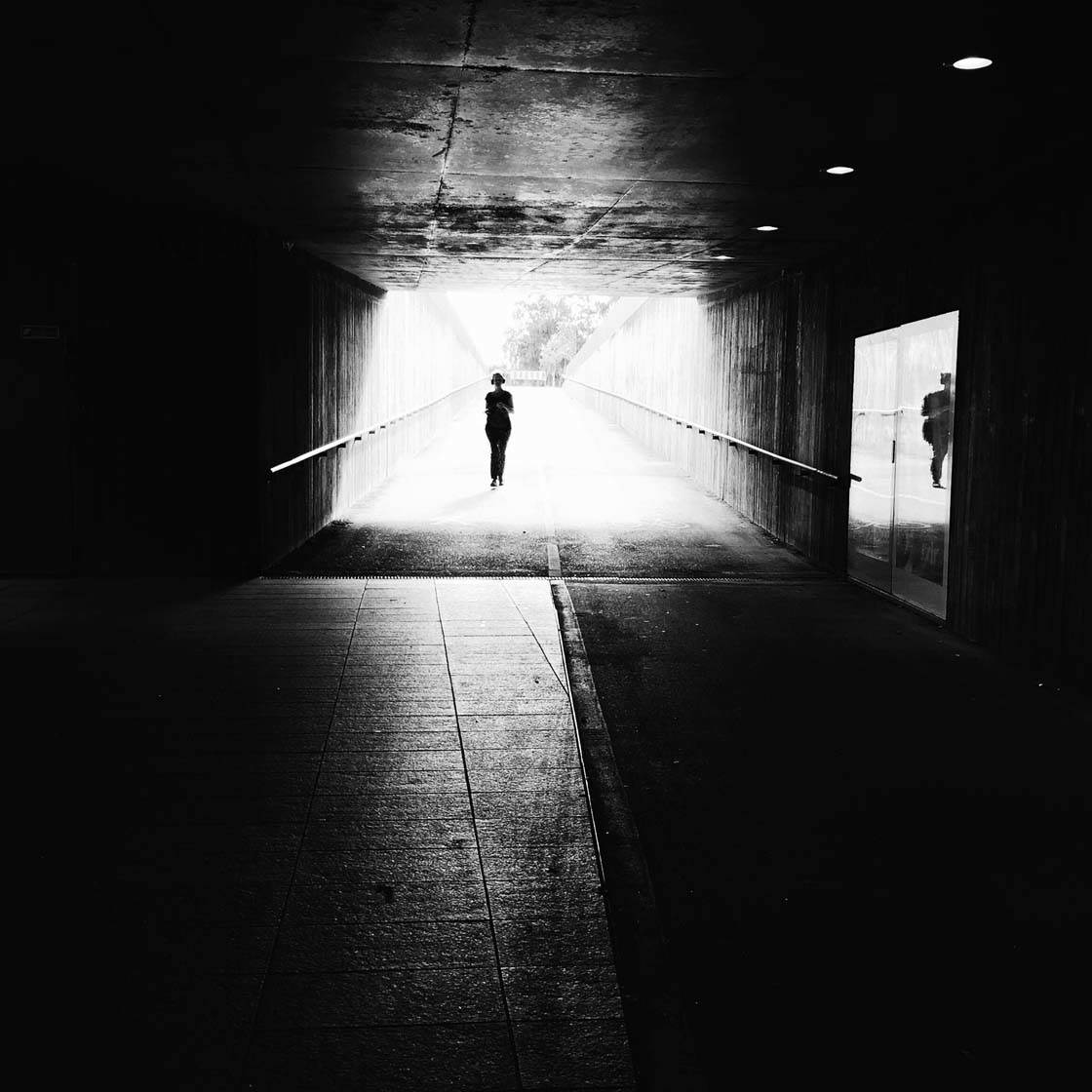
Here I’ve captured the silhouette of a runner in harsh light outside, as well as their reflection on the shiny wall inside the tunnel.
7. Capture Lens Flare
When you take a photo in direct sunlight, you can often capture lens flare or sun flare by pointing your camera at the bright sun. When the light enters the lens of your camera at a certain angle, rays of light or colored shapes will appear in your picture.
Lens flare can ruin a photo if it gets out of control, creating a distracting element that takes too much of the viewer’s attention.
But if you get it right, lens flare can add something interesting and artistic to your photo. It can actually make a rather boring scene appear much more mysterious and eye-catching.
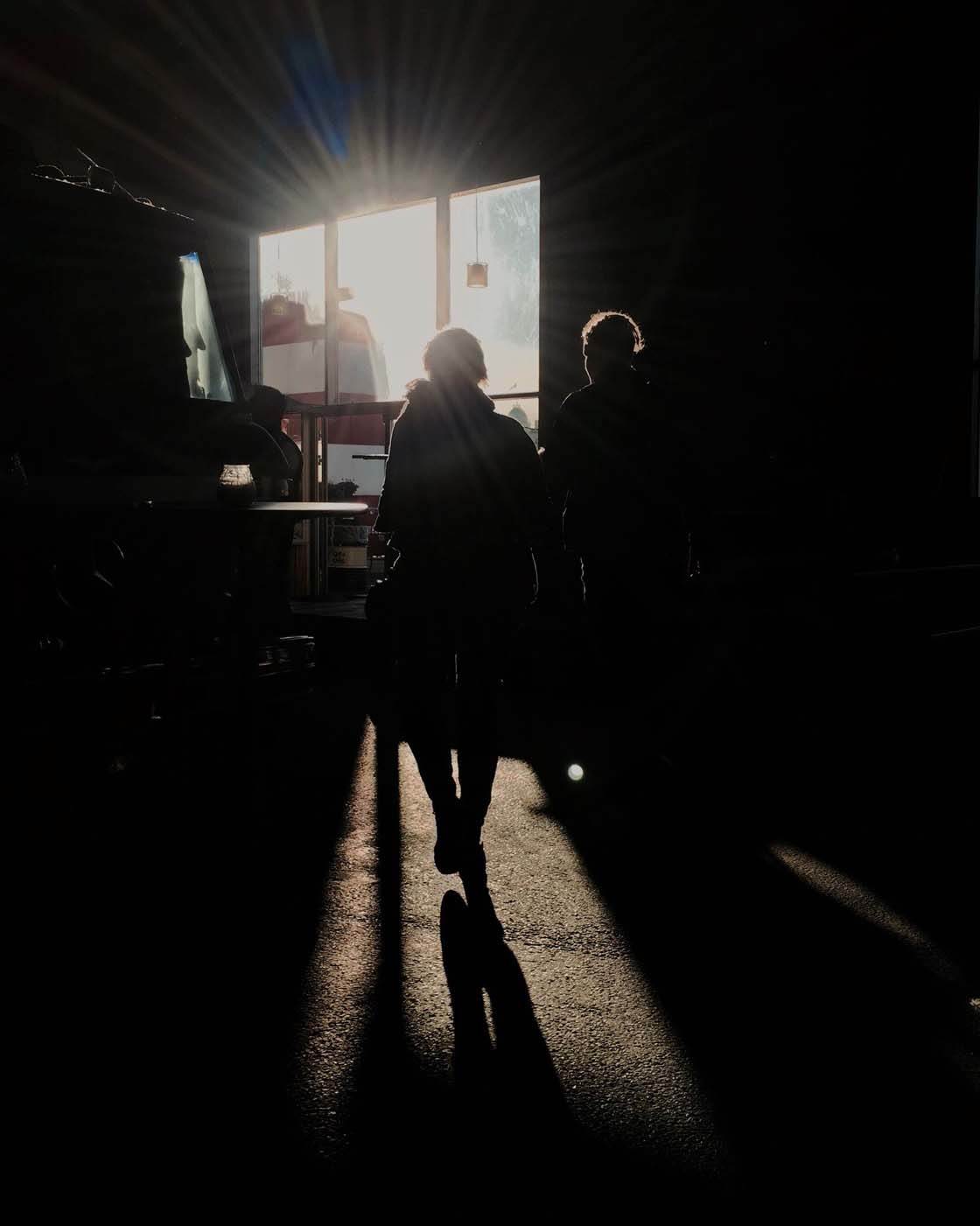
You can capture lens flare in very harsh sunlight during the middle of day and also during the golden hours. The time of day that you shoot at will change how the lens flare appears.
In the middle of day, the sun is very bright and the lens flare will be quite harsh. When the sun is low in the sky, the lens flare will appear softer and more golden.
When the sun is low, you can position it behind an object in the scene so that it peeps out from around the edges. This prevents the bright sun from dominating the image which still allowing to capture the flare.
If the light is very bright, it’s usually better to have the sun just out of the frame. This allows you to capture the rays of light beaming in from the top of the image, without the bright sun ruining the photo.
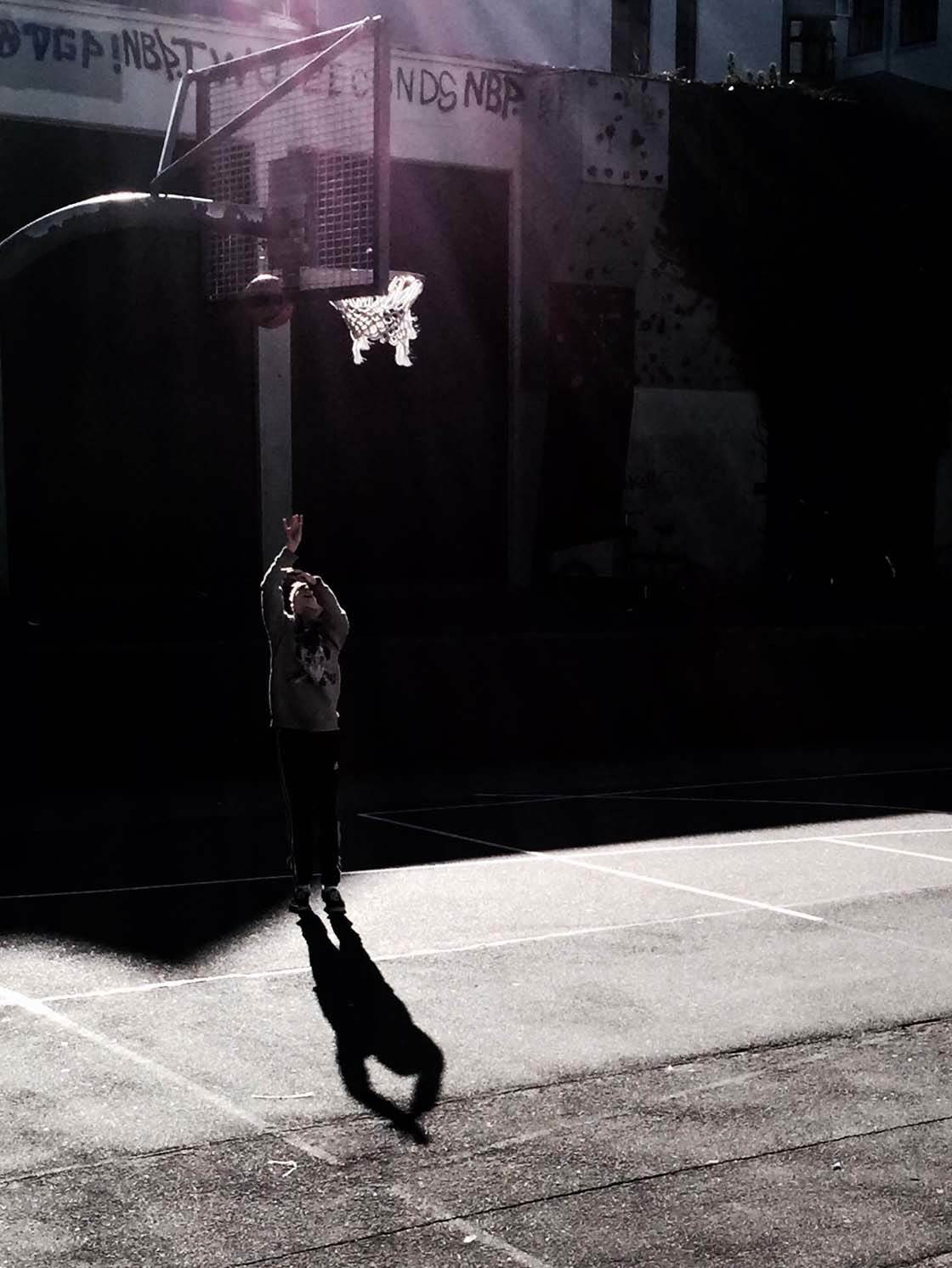
If you want to experiment with lens flare in your photos, but haven’t had much success capturing it, you can always add lens flare to your photos in post-processing.
There are a number of good photoshop apps that have a fantastic range of realistic lens flare effects, including Lens Distortions, LensLight and PicsArt.
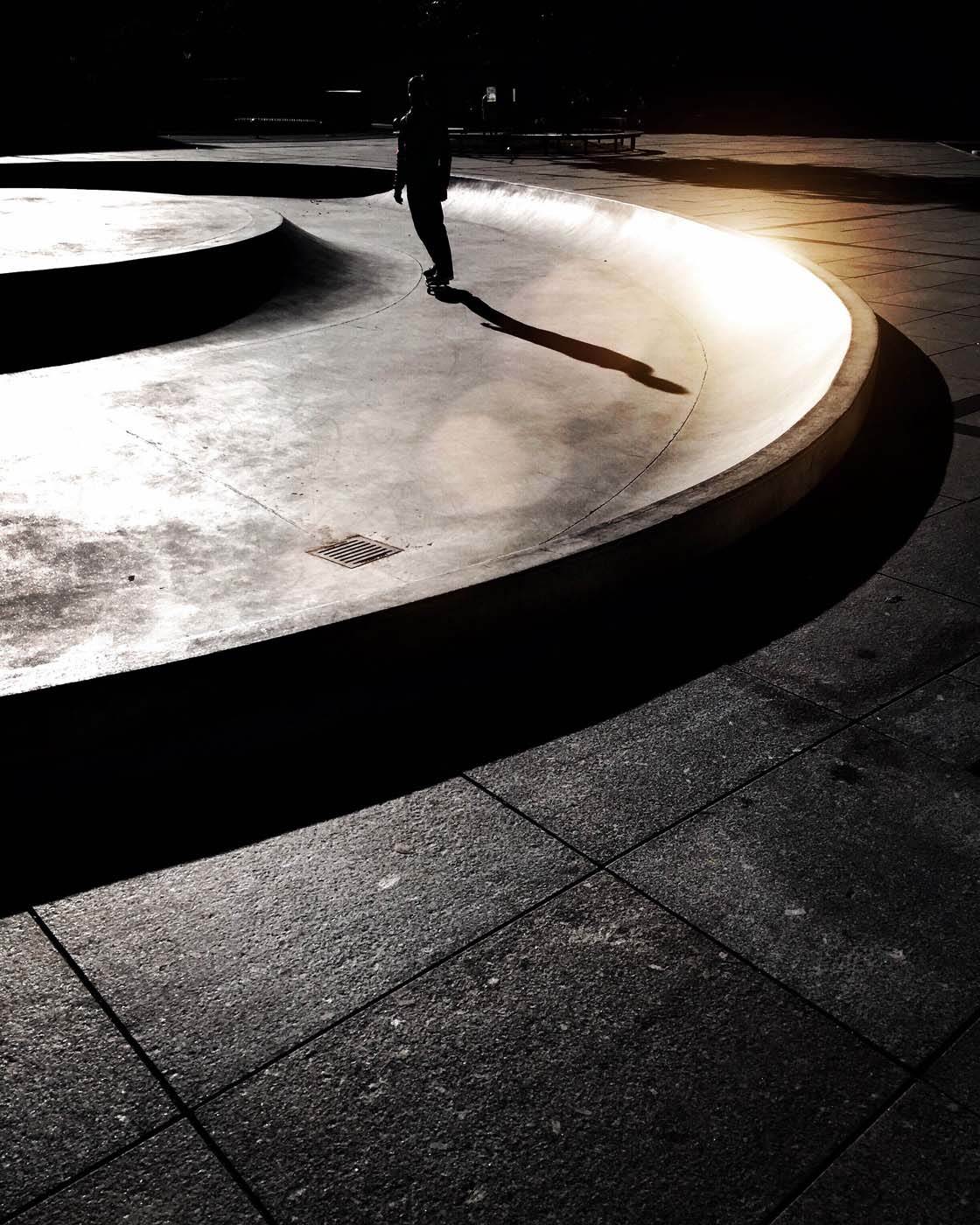
8. Tweak Exposure In Post-Processing
While you should always try to get the exposure levels correct at the time of shooting, a bit of exposure adjustment in post-processing can make all the difference to the final image.
There are many great photo editing apps that allow you to adjust exposure. You can simply use the editing tools in your iPhone’s native camera app, or use an editing app such as Snapseed or VSCO.
For street photos taken in harsh light, I recommend that you concentrate on adjusting the contrast, shadows and highlights. These aspects are so important, especially in the kinds of photos we’re dealing with.
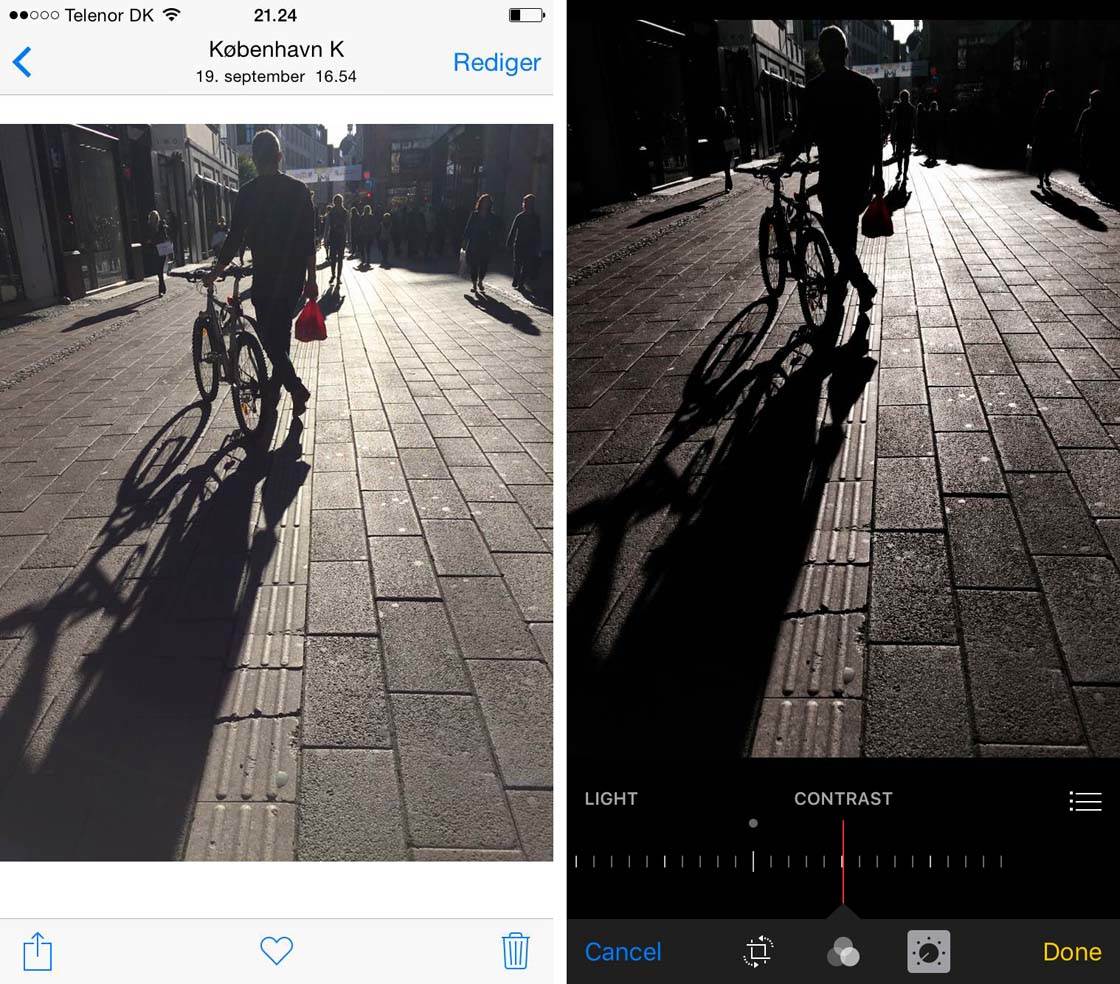
In this picture I’ve used the iPhone’s native camera app to make adjustments to light, contrast, shadow and color. I’ve turned up the level of shadow and contrast, and turned down the light and color levels a bit.
Finally, I actually turned up the amount of exposure a bit which made the street look more dramatic. It made the sun’s reflection on the street appear shiny without blowing out the structure and details.
With this edit, my subject became a stronger silhouette and the shadow became darker and more prominent. It also made the other people and buildings in the background much darker, so they no longer distract the viewer’s eye from the main subject – the man with the bike.
9. Convert To Black & White
A black and white conversion is often a good idea when it comes to harsh light street photos. Black and white images tend to enhance the shadow patterns, as well as the contrast between light and shadow.
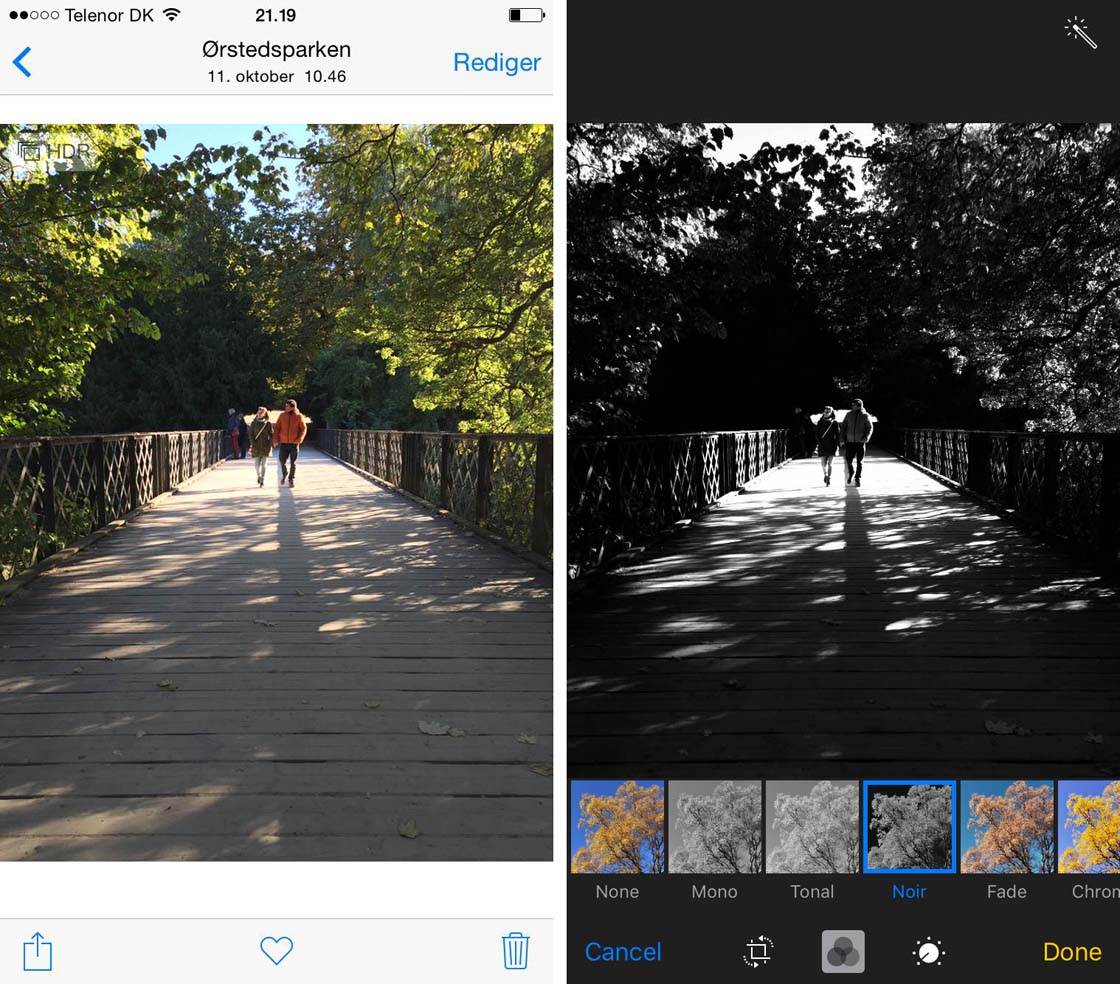
Many editing apps allow you to convert your photos to black and white, but I usually use the iPhone’s native camera app. I like to apply the “Noir” filter, and then fine tune the image by making adjustments to the light, shadow, contrast etc.
Alternatively I can recommend using the black and white filter called “Silvered” in the PhotoShop Express app. It gives you a slightly shiny, silver look to your black and white-edits.
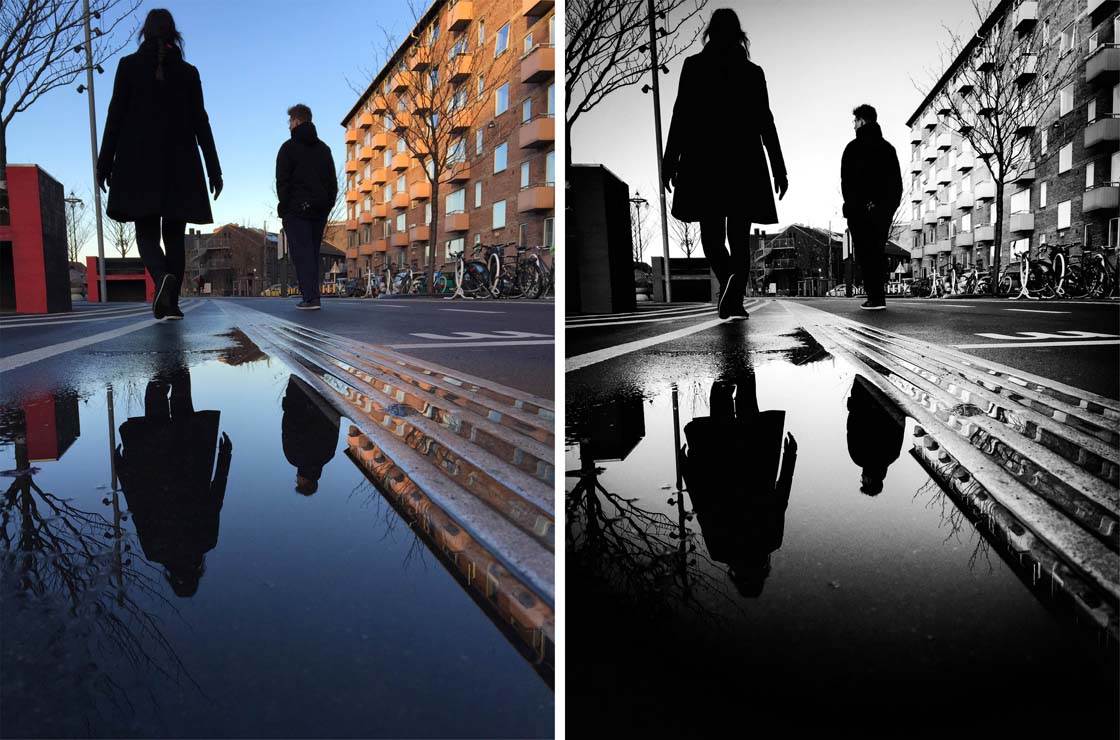
If you don’t want to add a filter, you can simply adjust the color saturation setting, reducing it all the way to zero to remove all of the color from the image.
Conclusion
As you’ve seen from the photos in this article, it’s perfectly possible to capture dramatic and intriguing street photos in harsh light.
Bright sunlight can be challenging to work with at first, but once you get the hang of using your iPhone’s exposure settings you’ll be able to capture stunning pictures that make the most of the strong light.
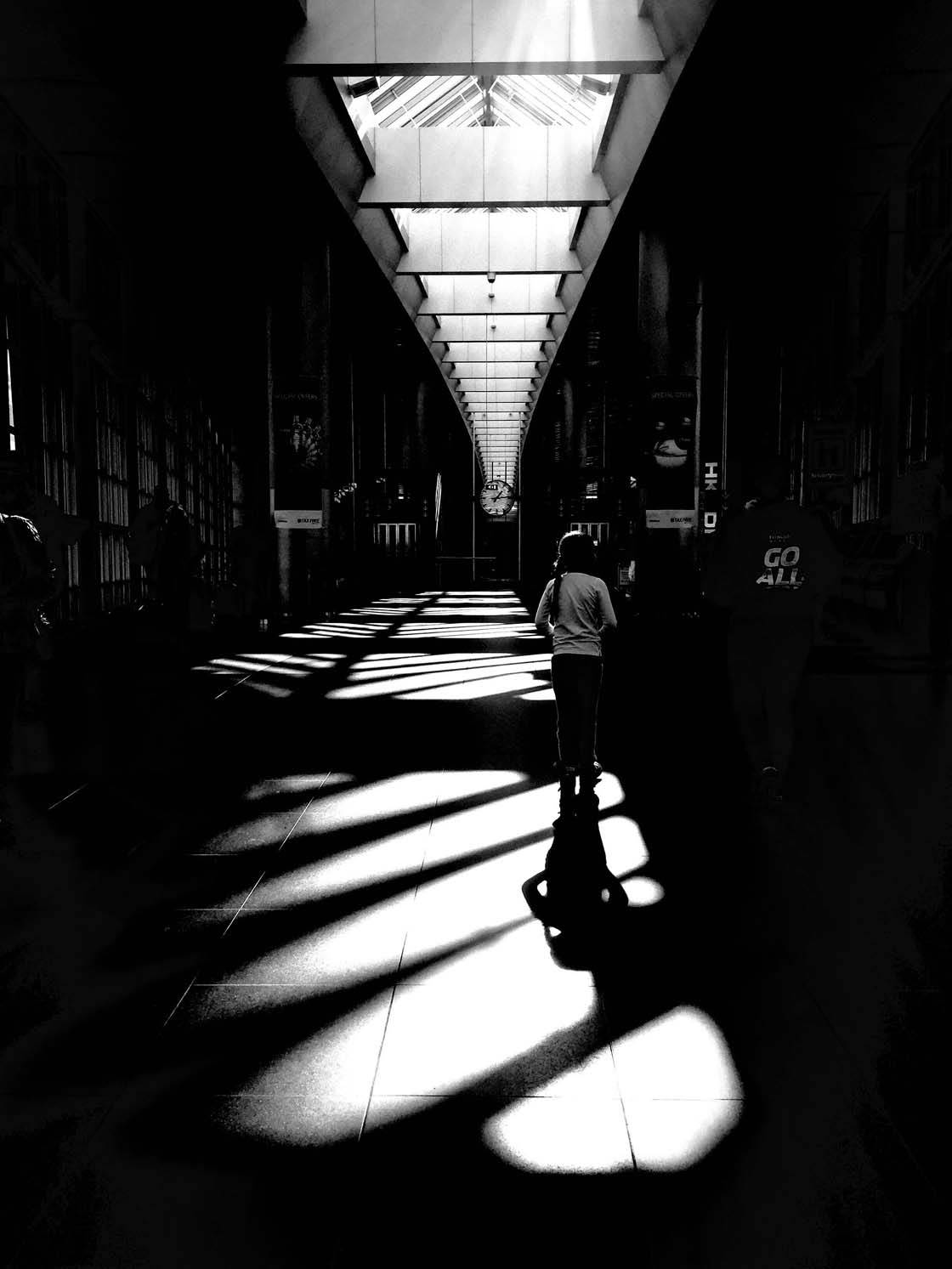
So on the next sunny day, why not venture out into the streets and find a good location where you can capture the contrast between light and shade?
Experiment with creating silhouettes and capturing interesting shadow patterns. Look out for reflections, and have a go at capturing some lens flare in your photos.
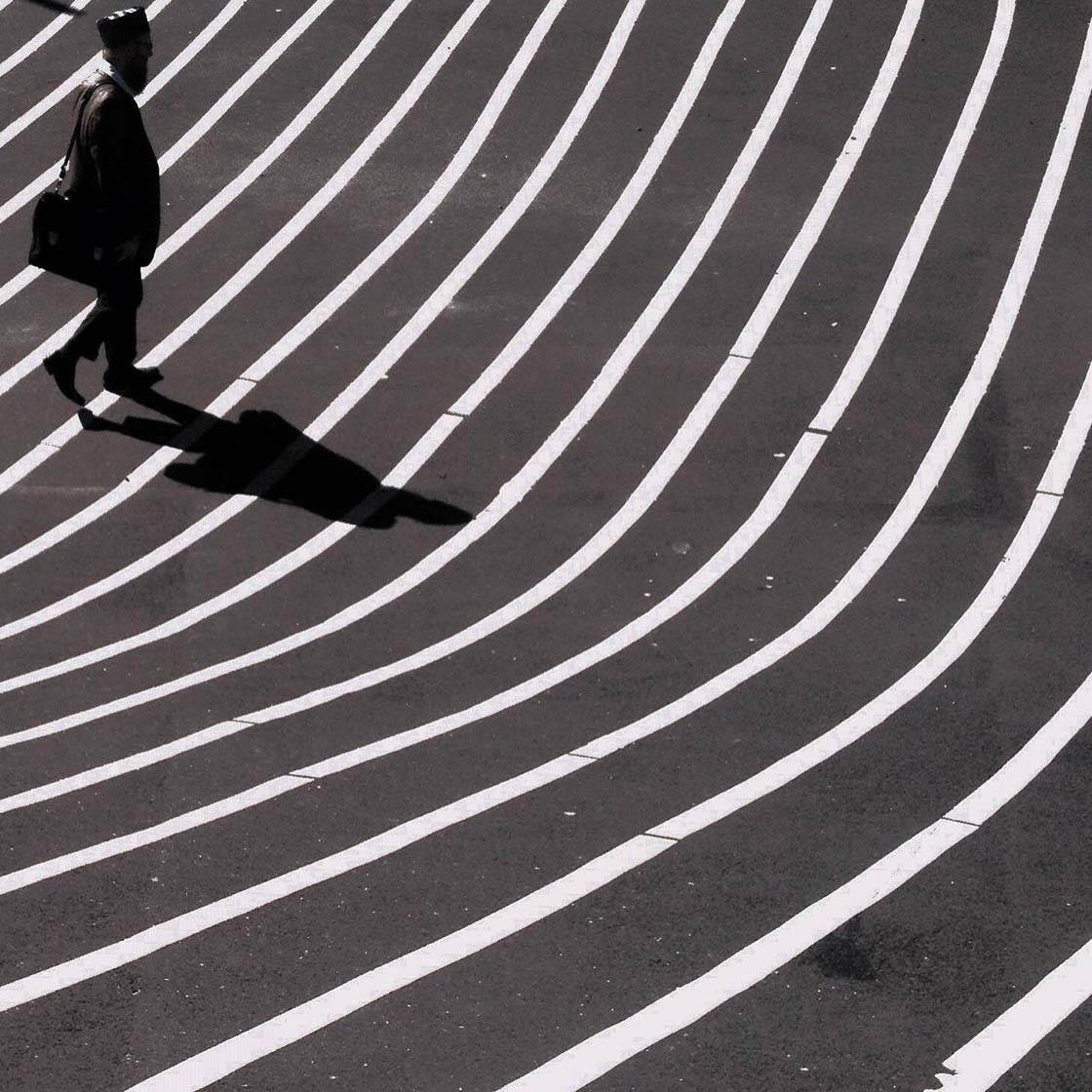
Then once you’ve got some good shots, play around with the exposure settings in your favorite editing app to see if you can enhance the original image.
And don’t forget to try a black and white conversion. It’s amazing how a little bit of editing can turn a great iPhone photo into an amazing one.
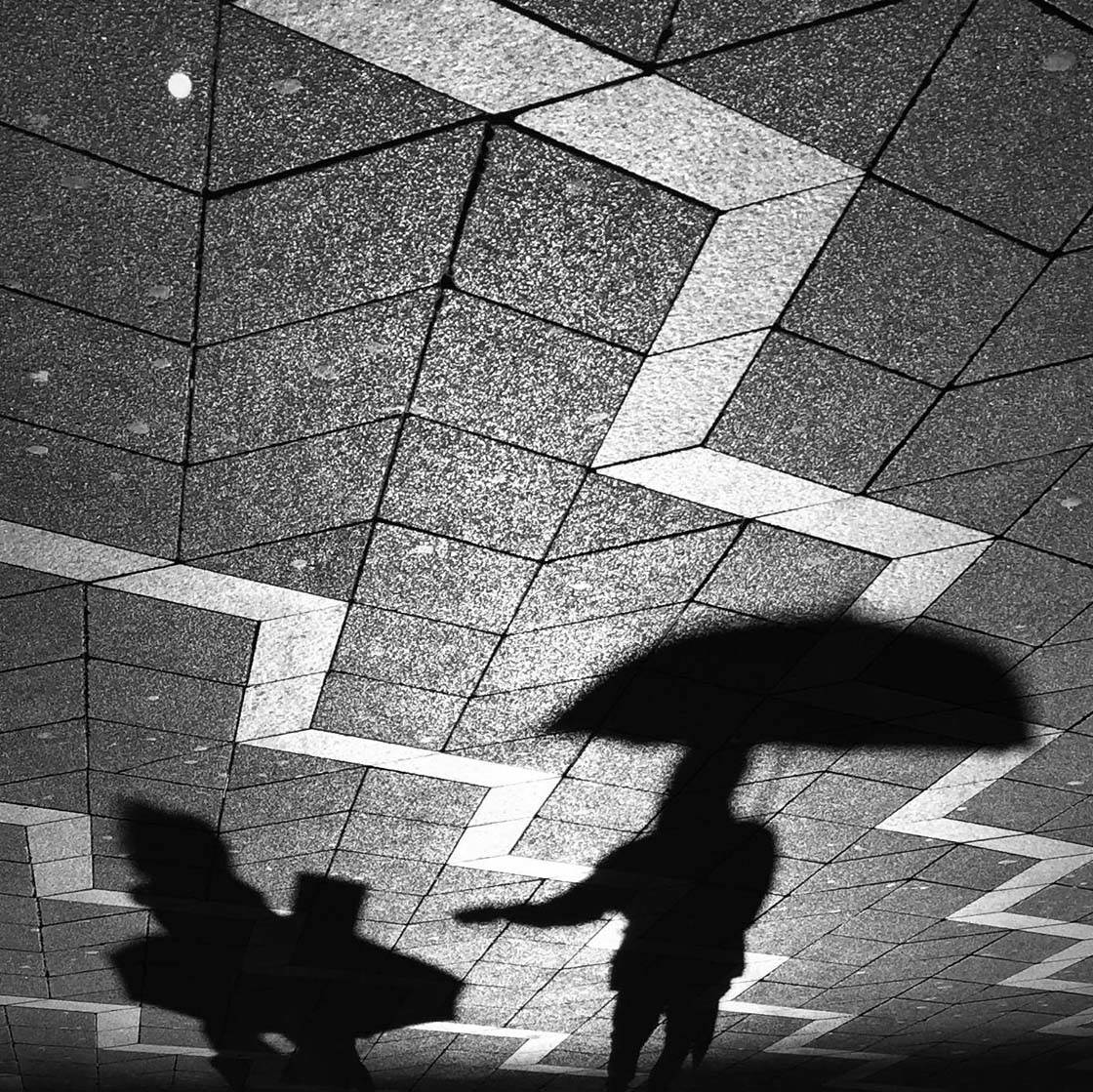


Great Tutorial Thank you